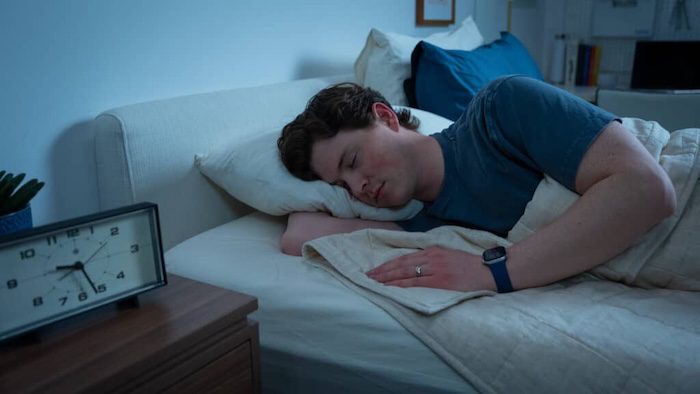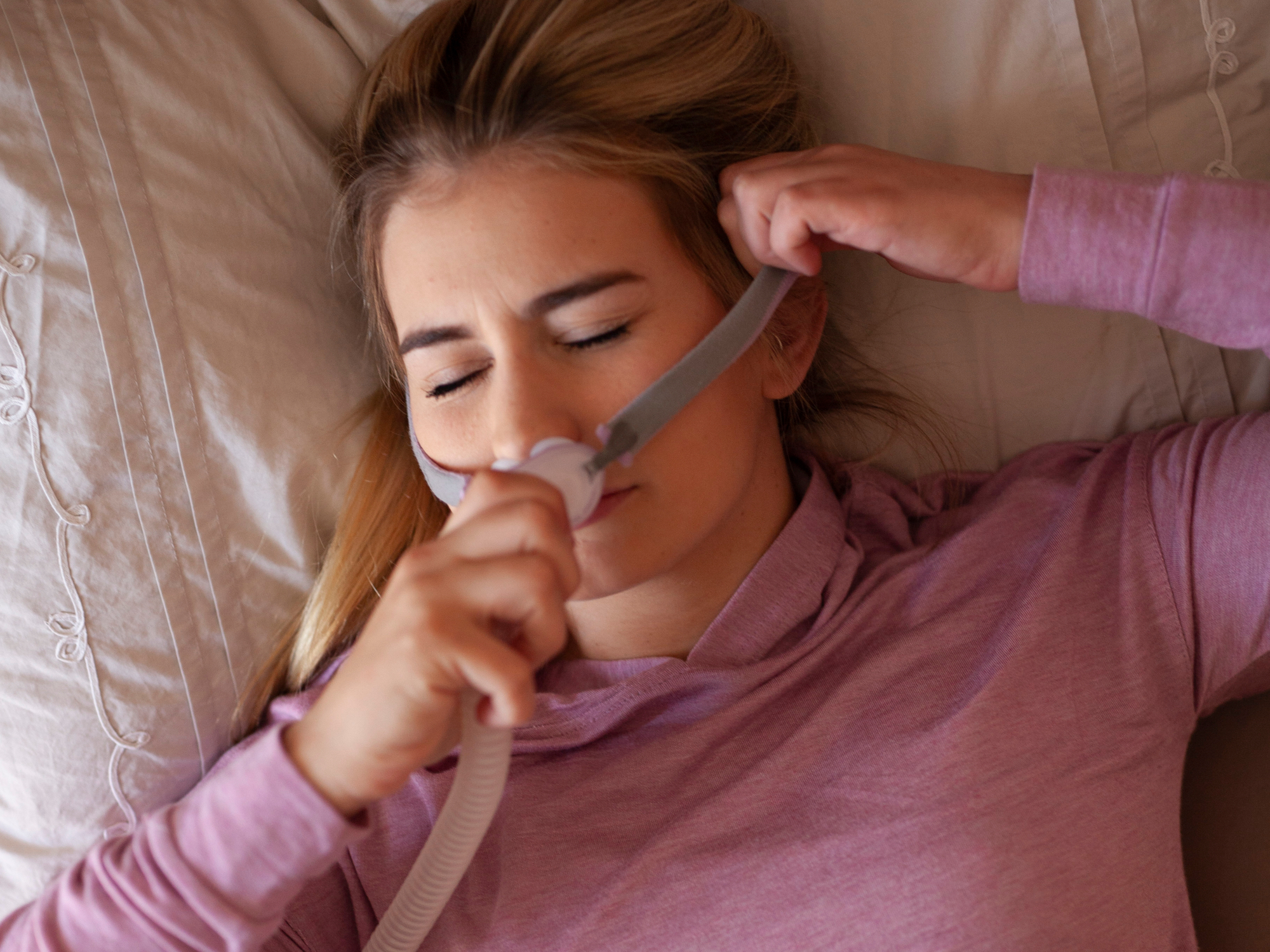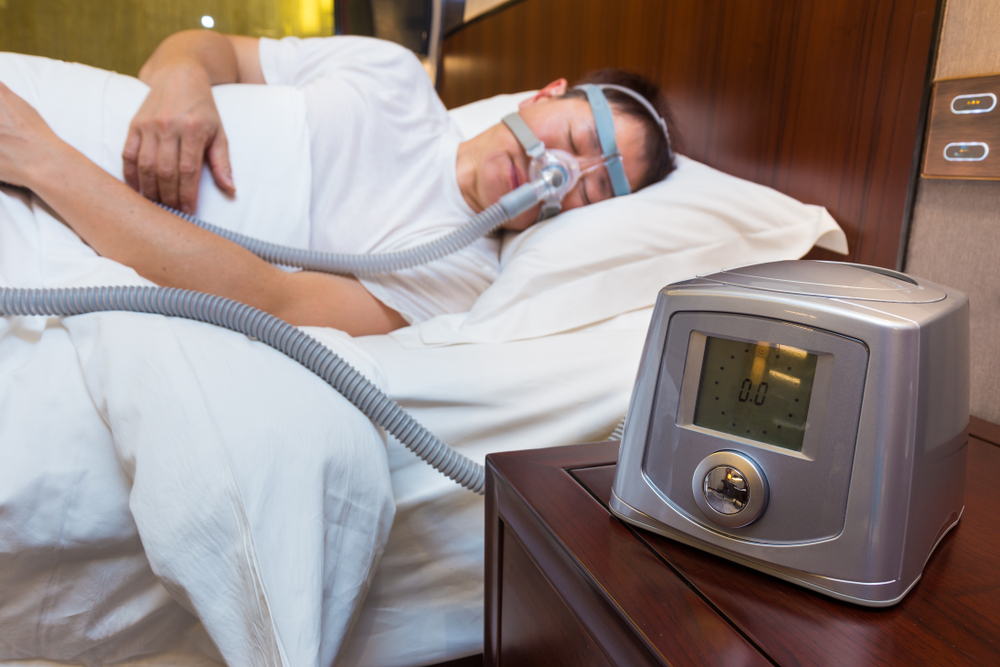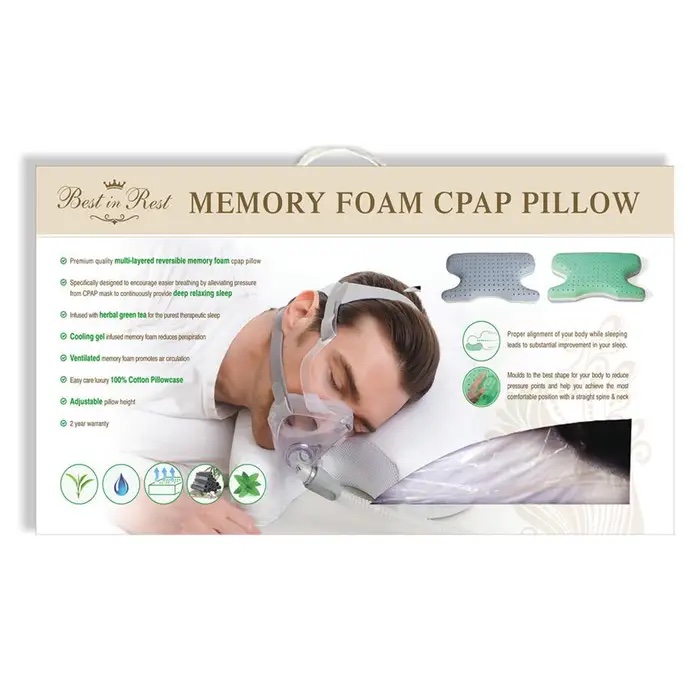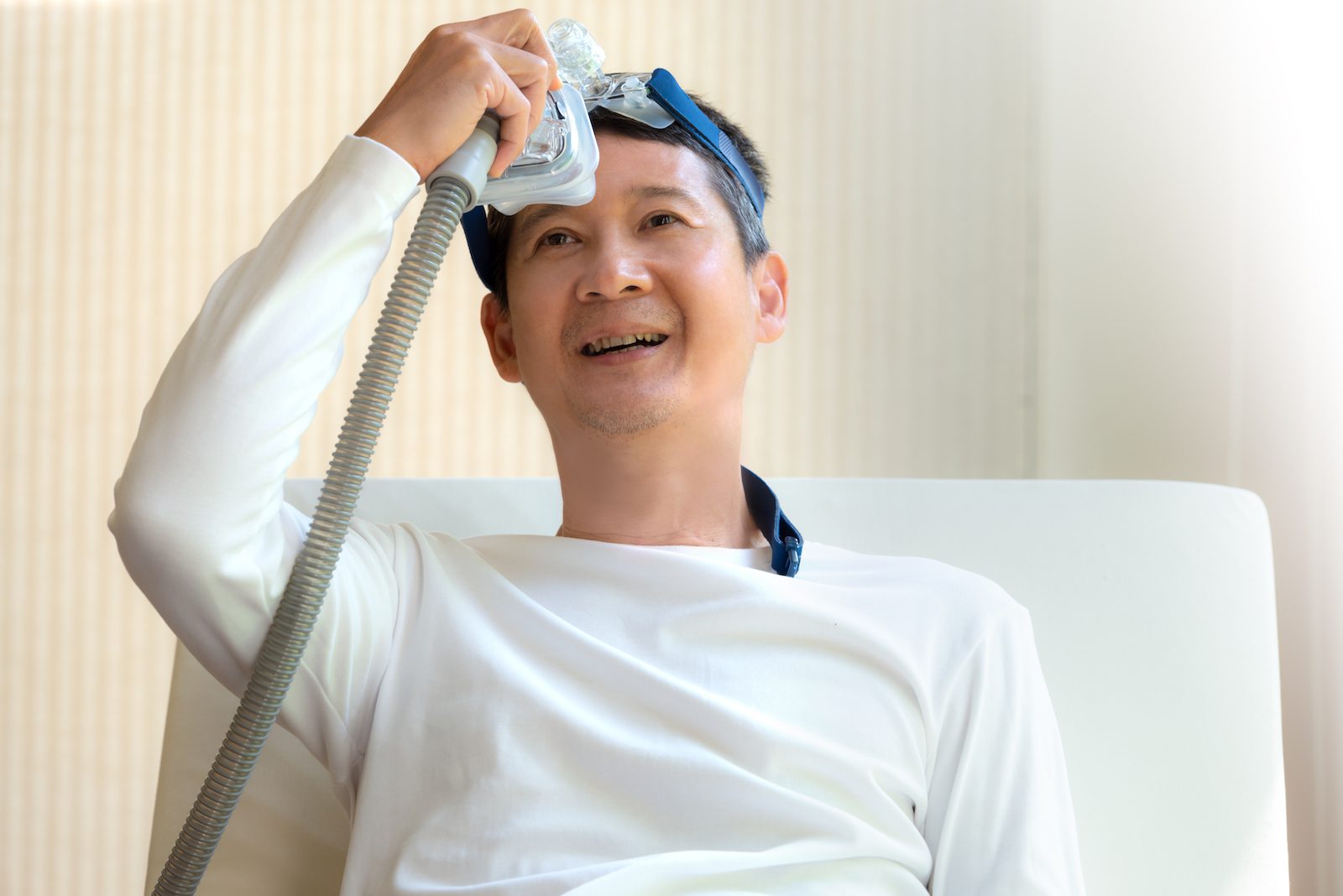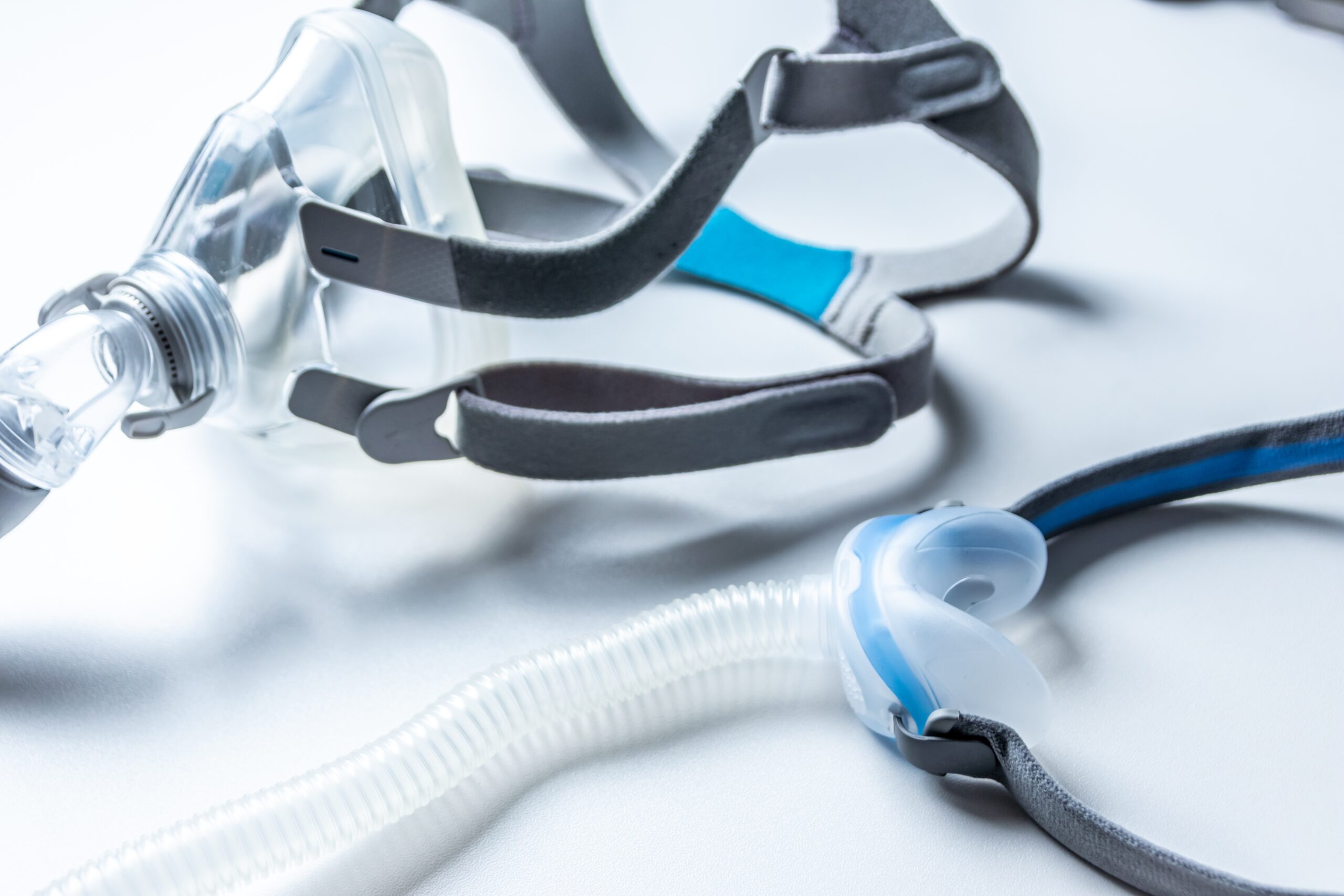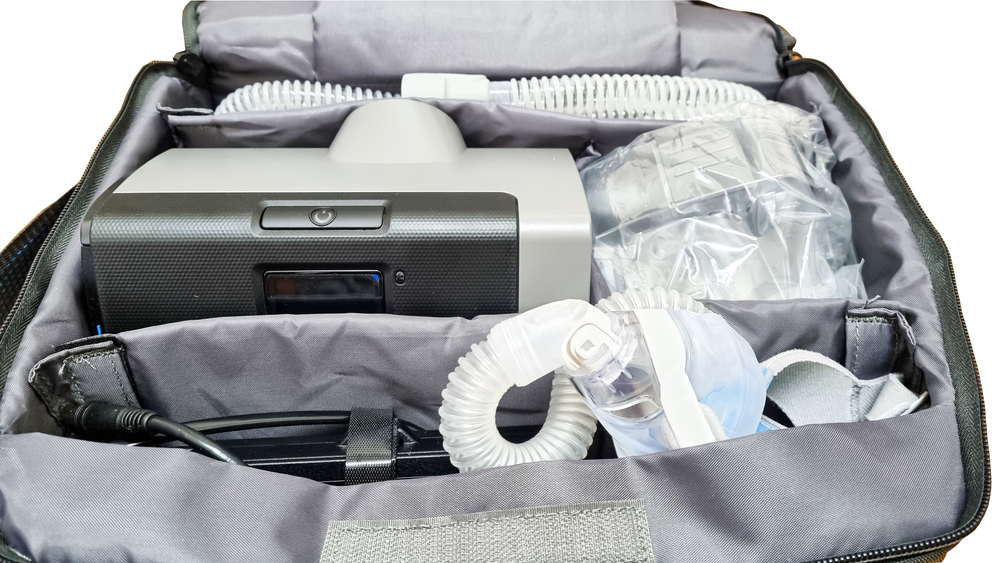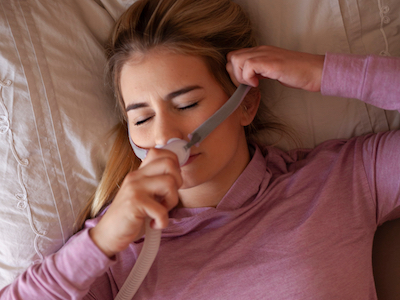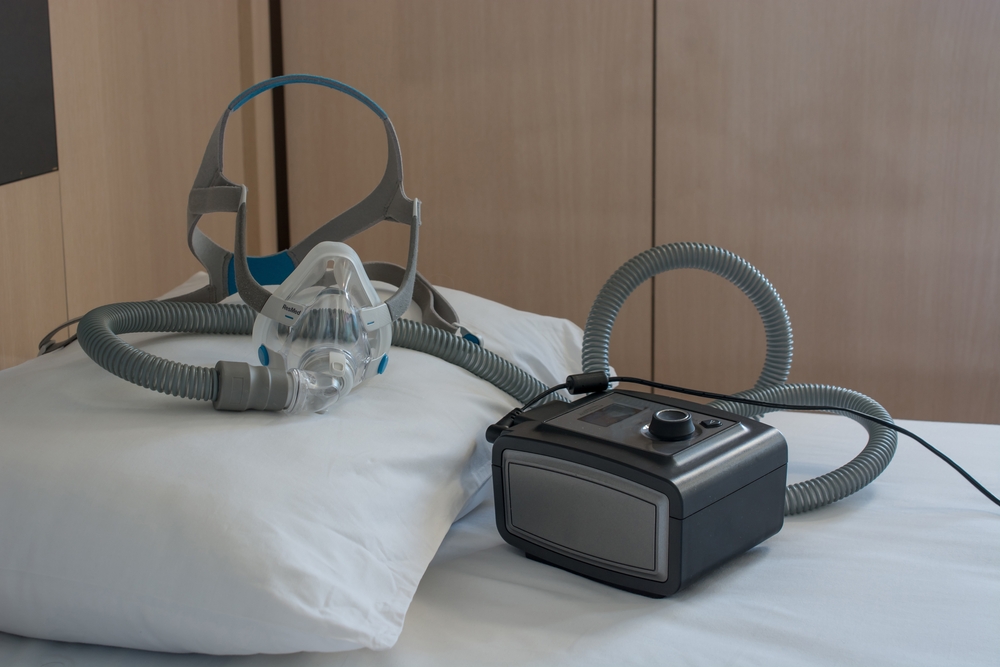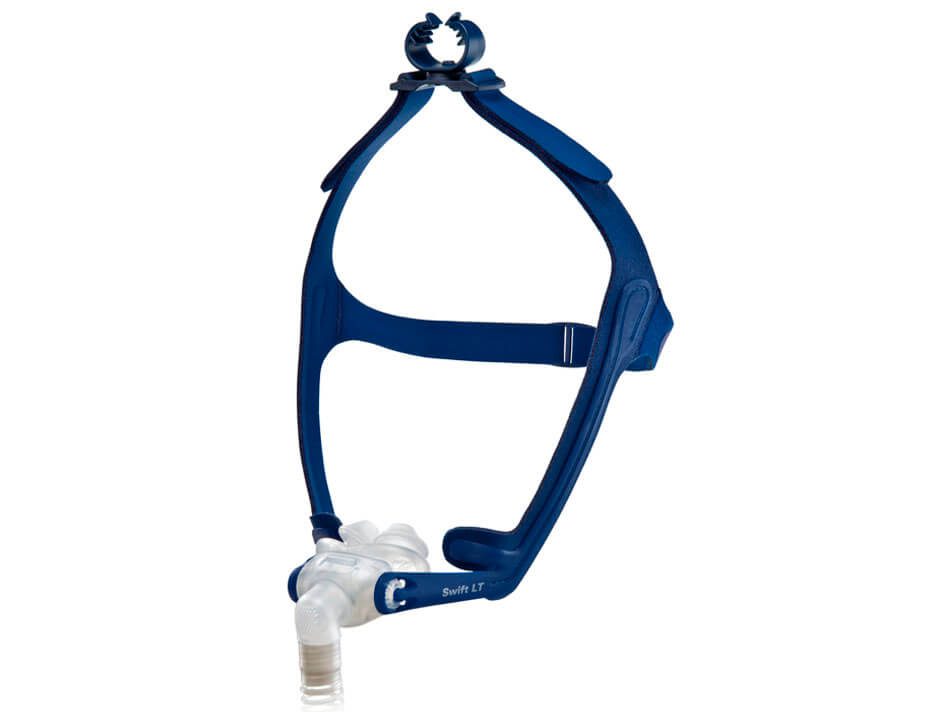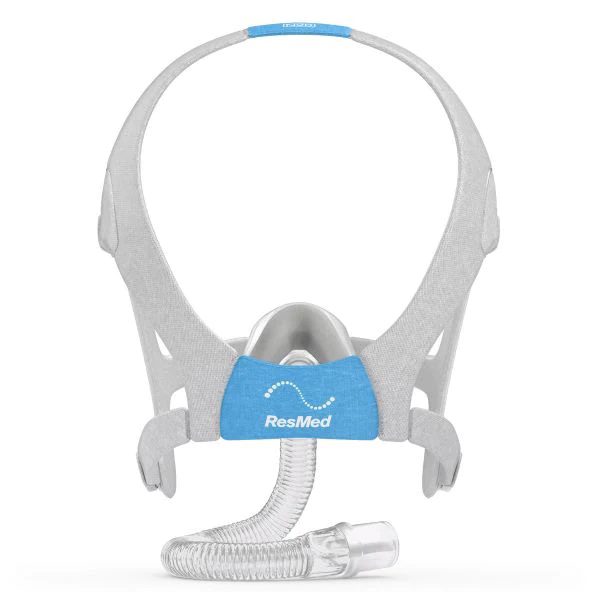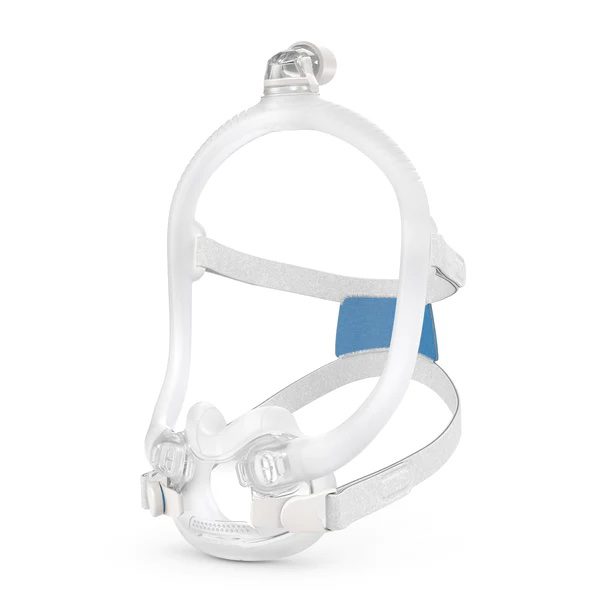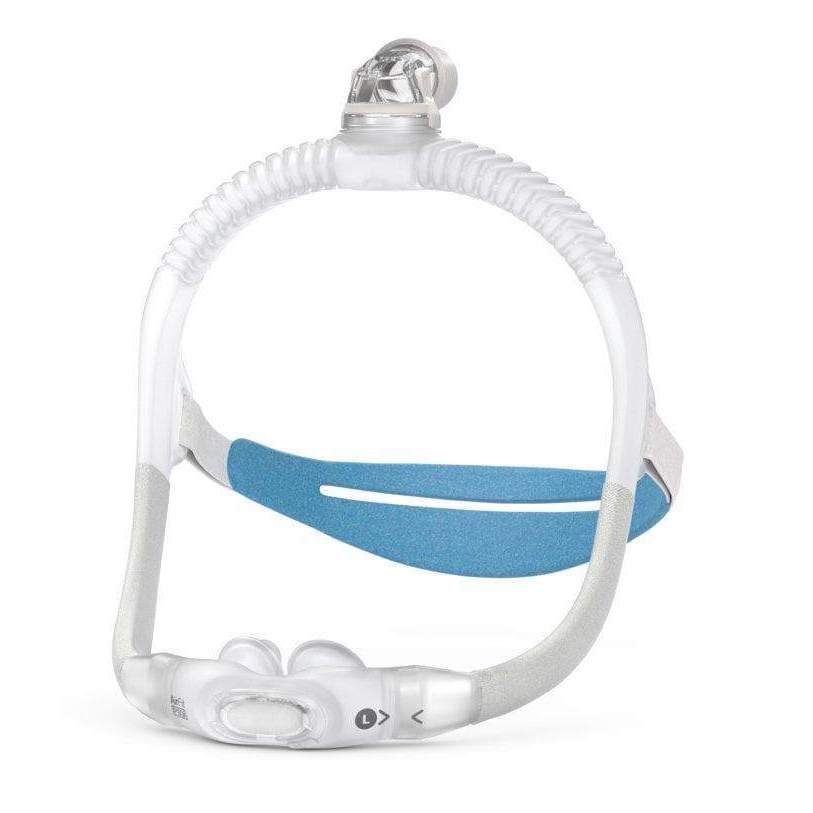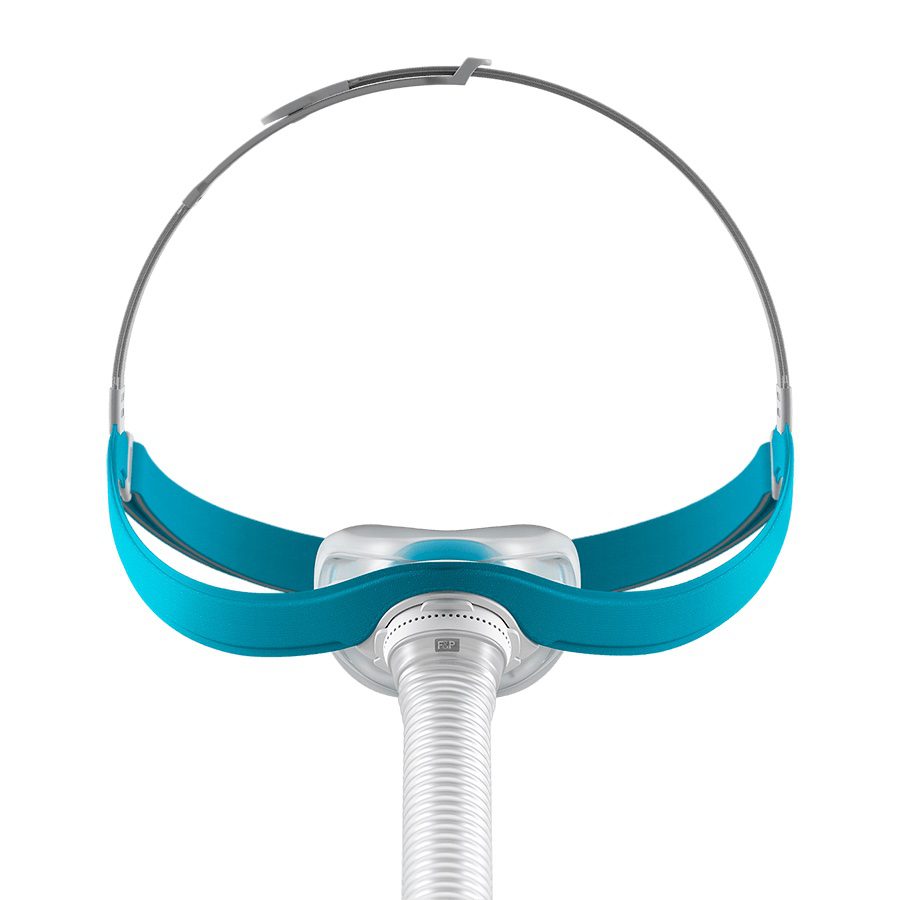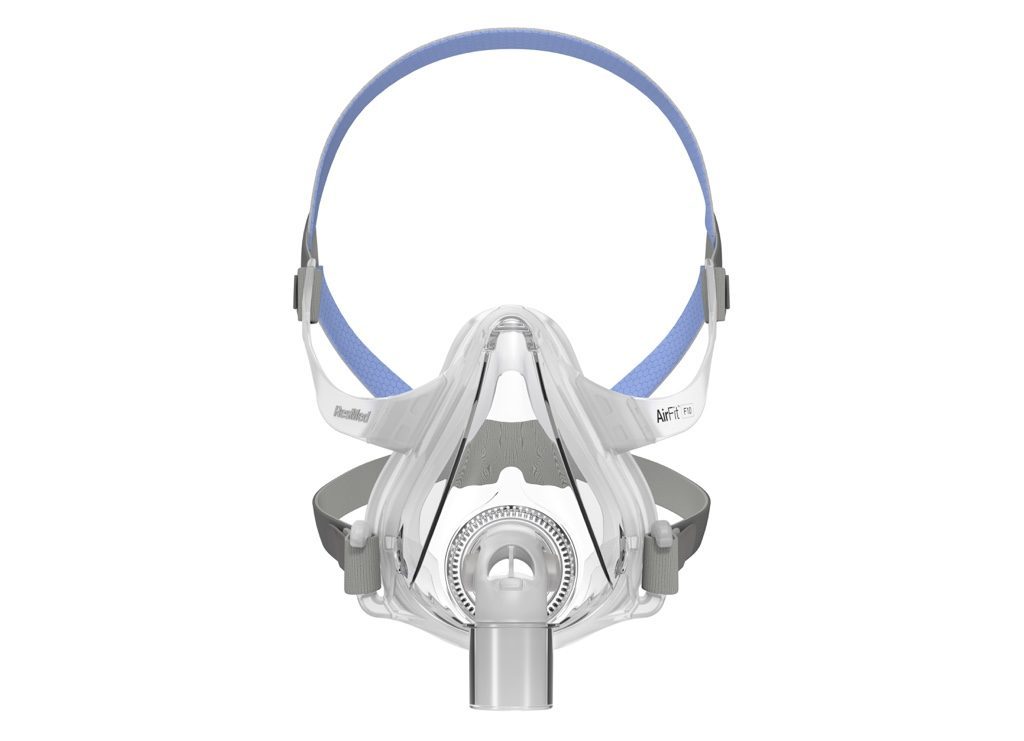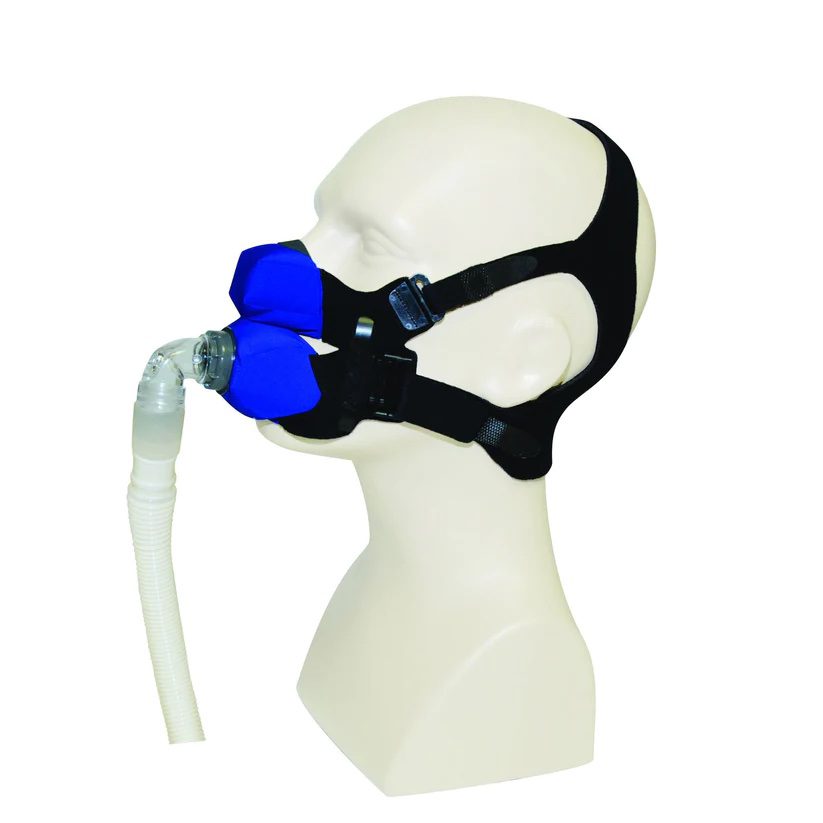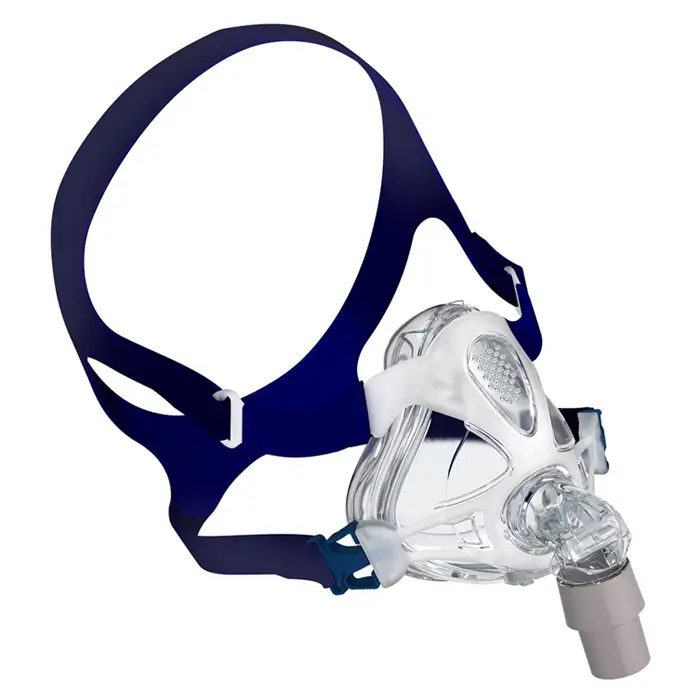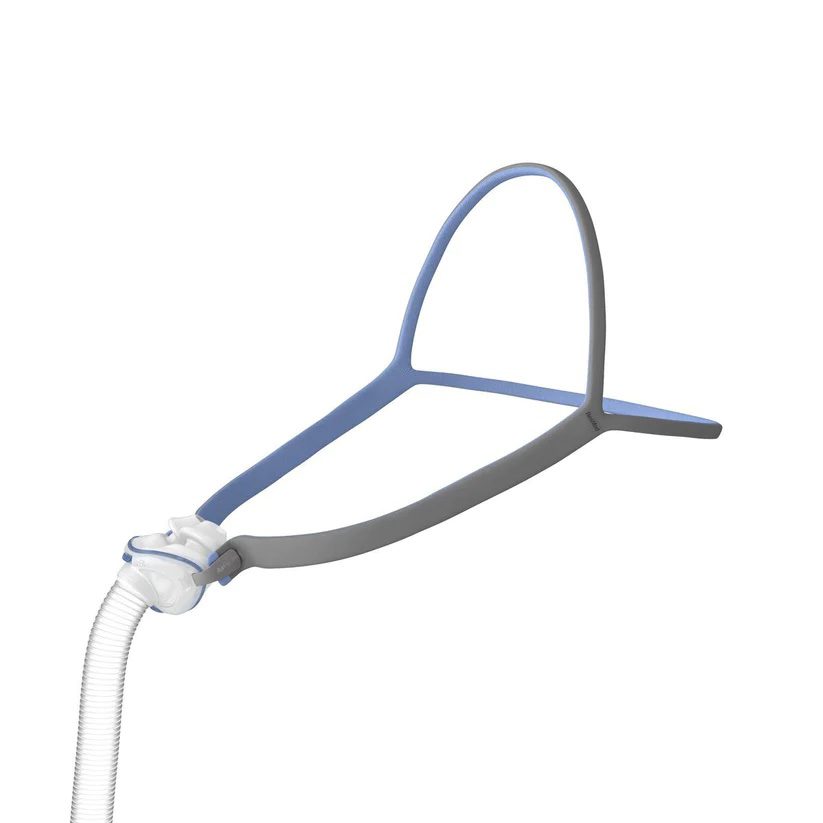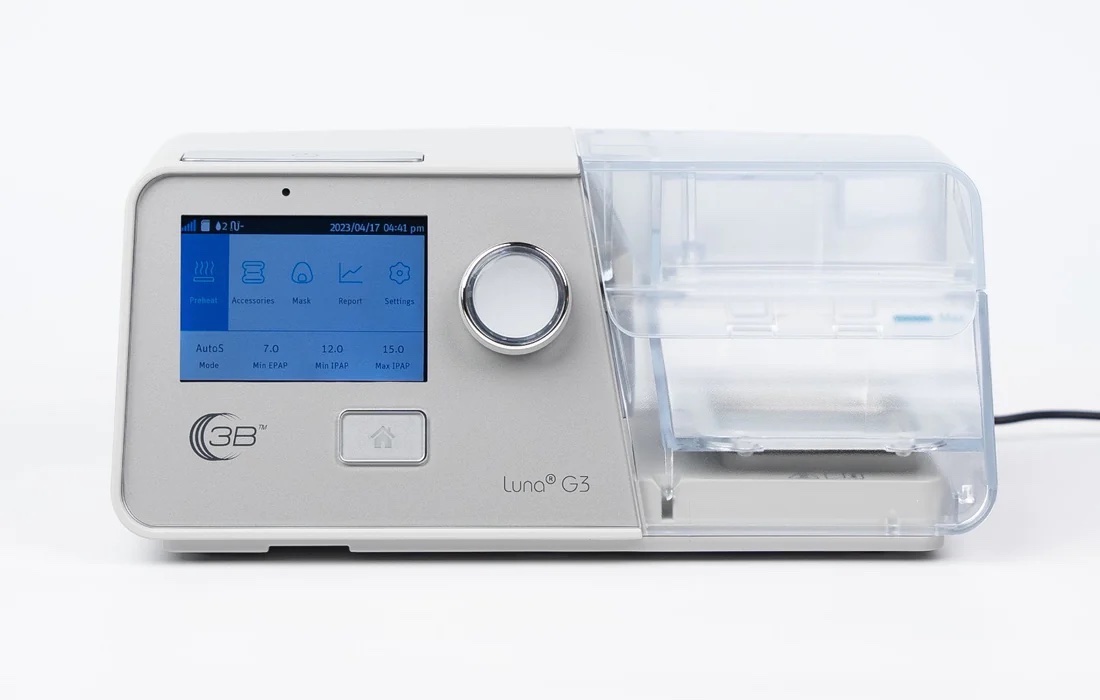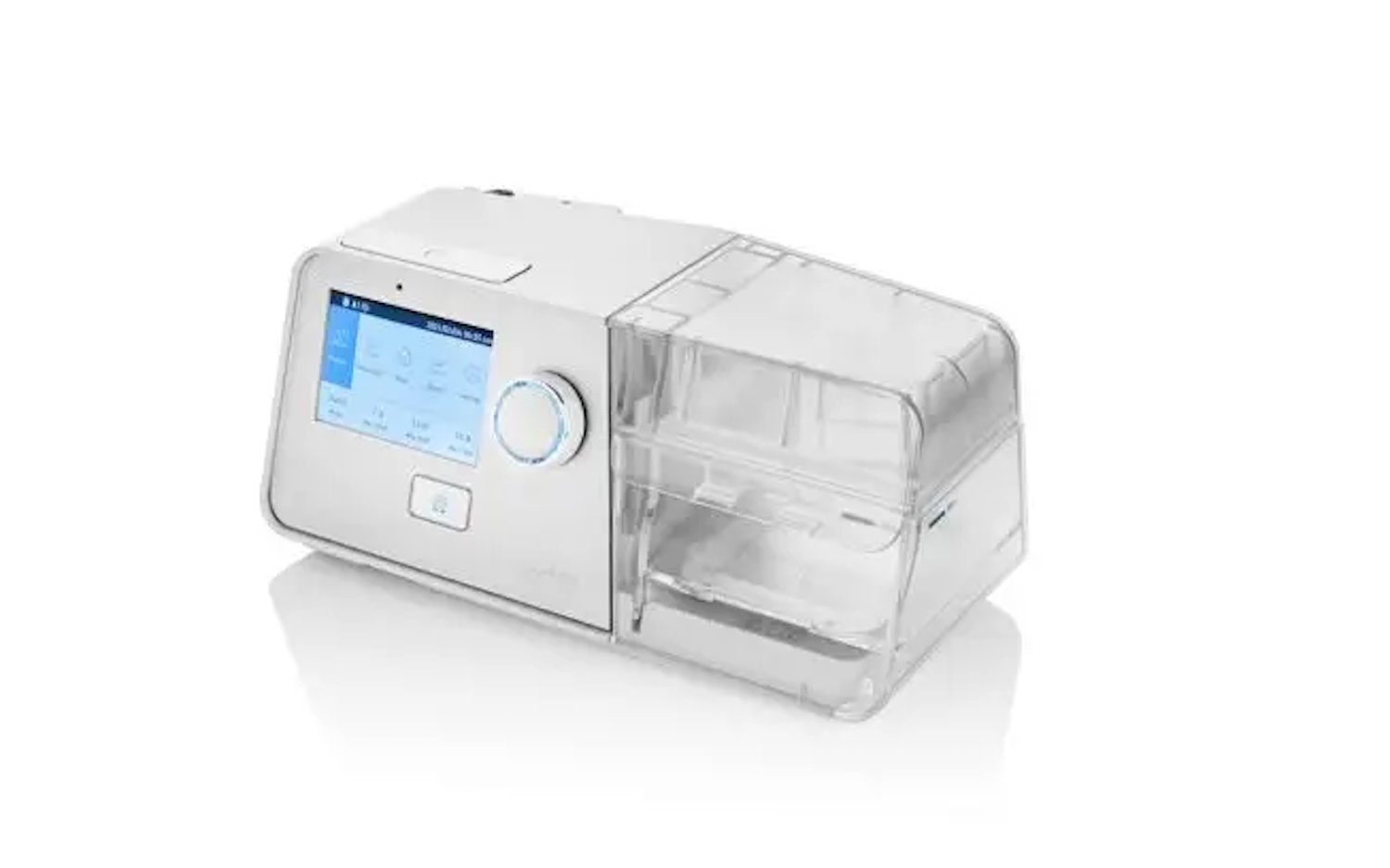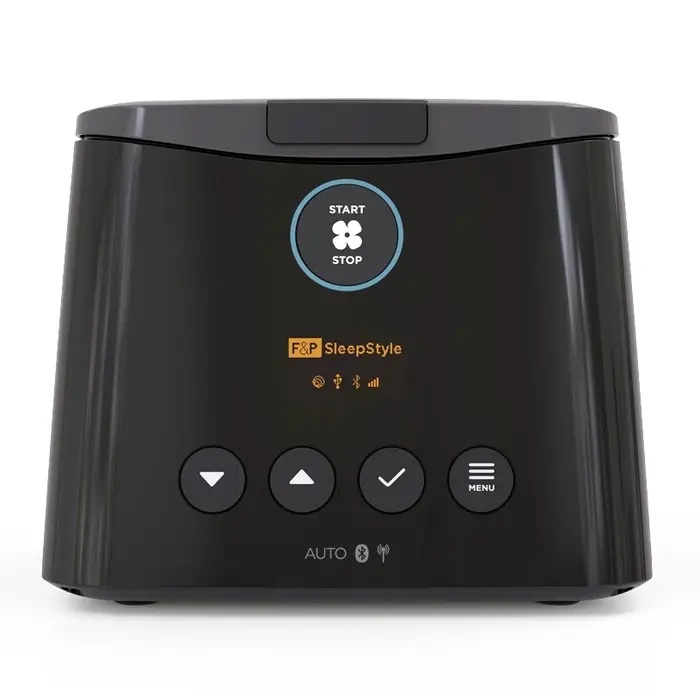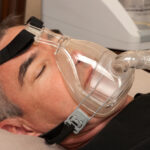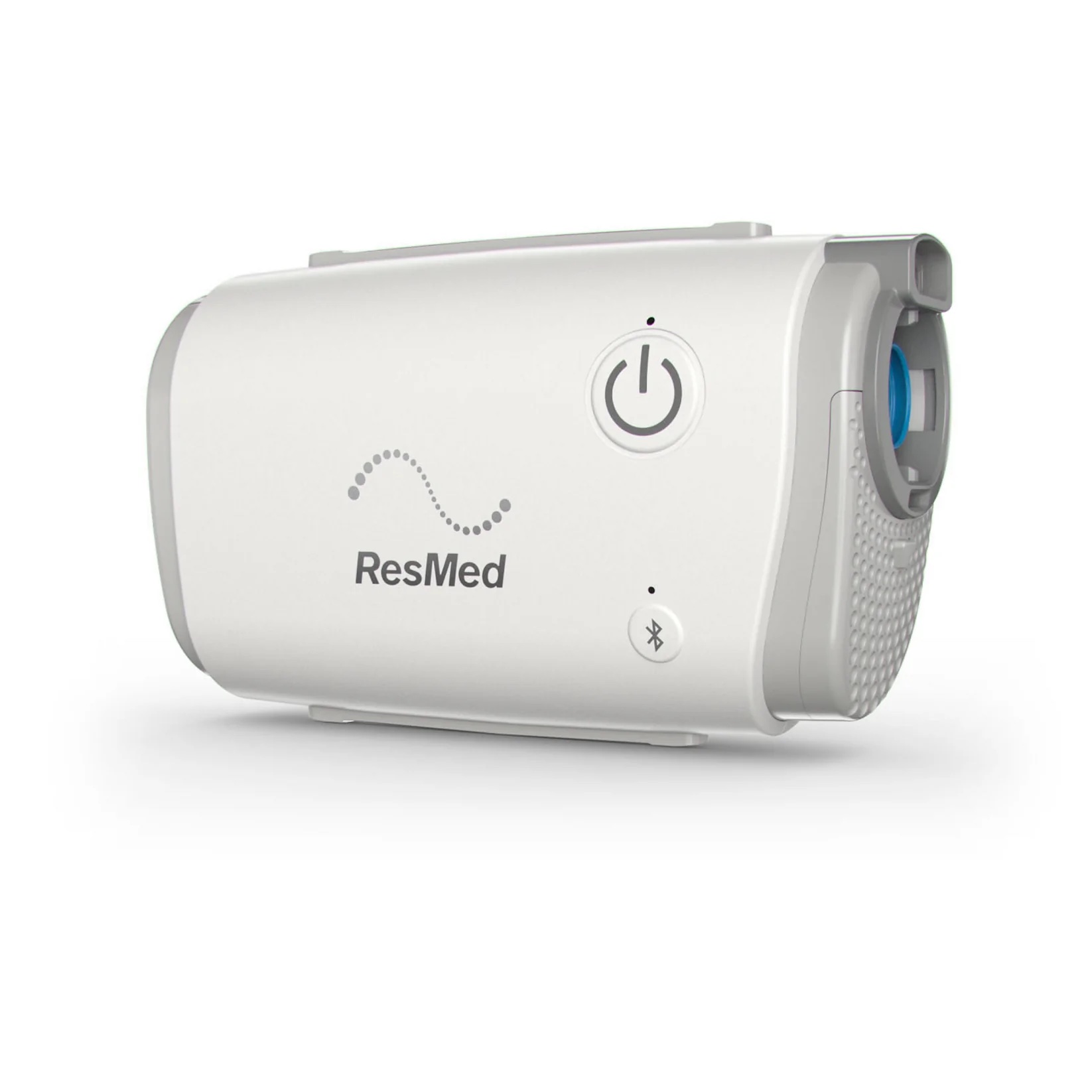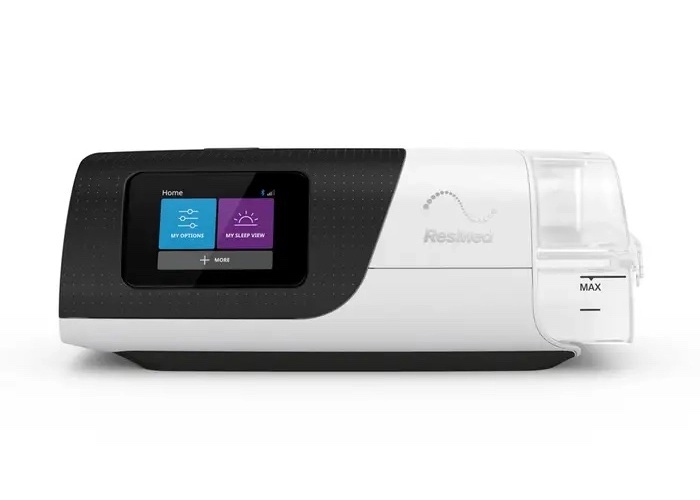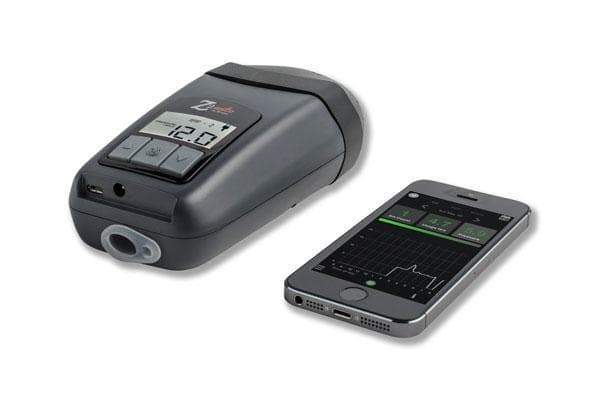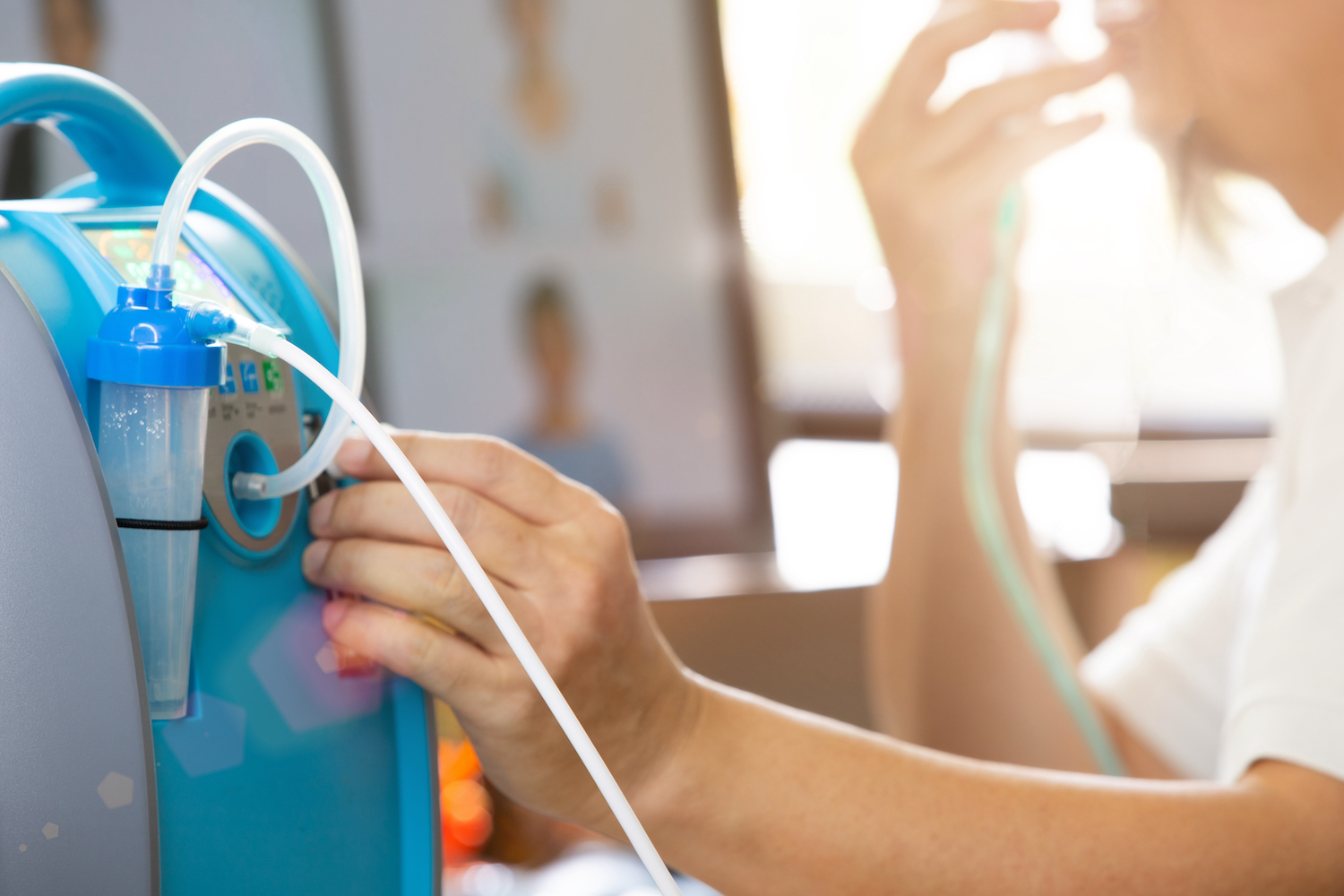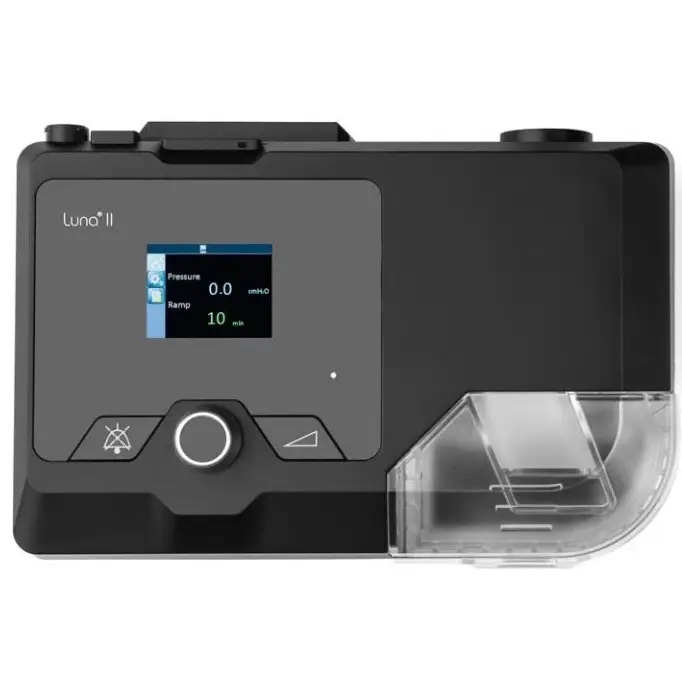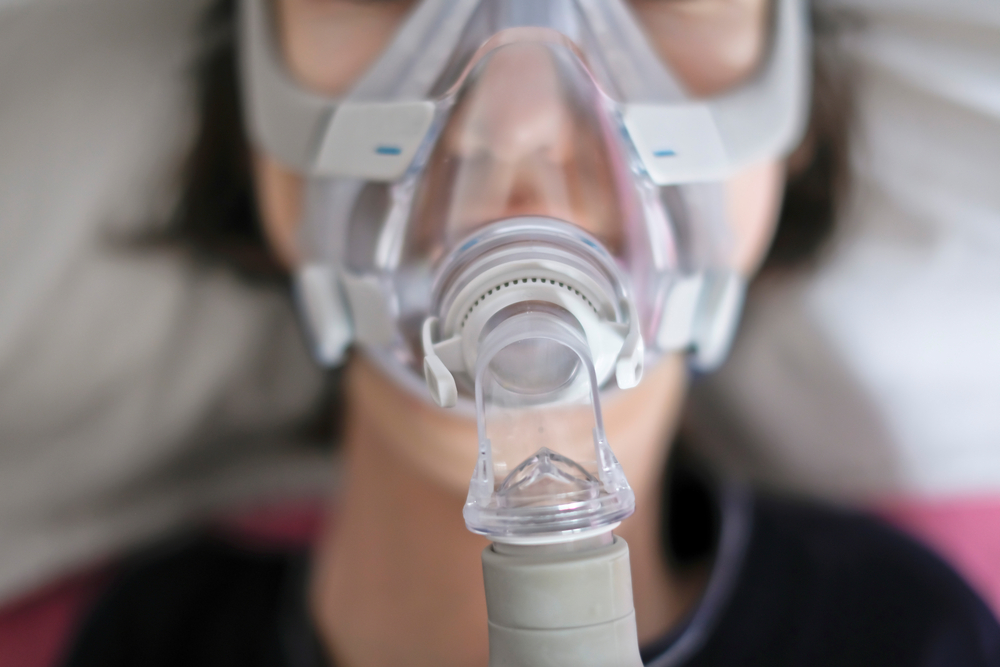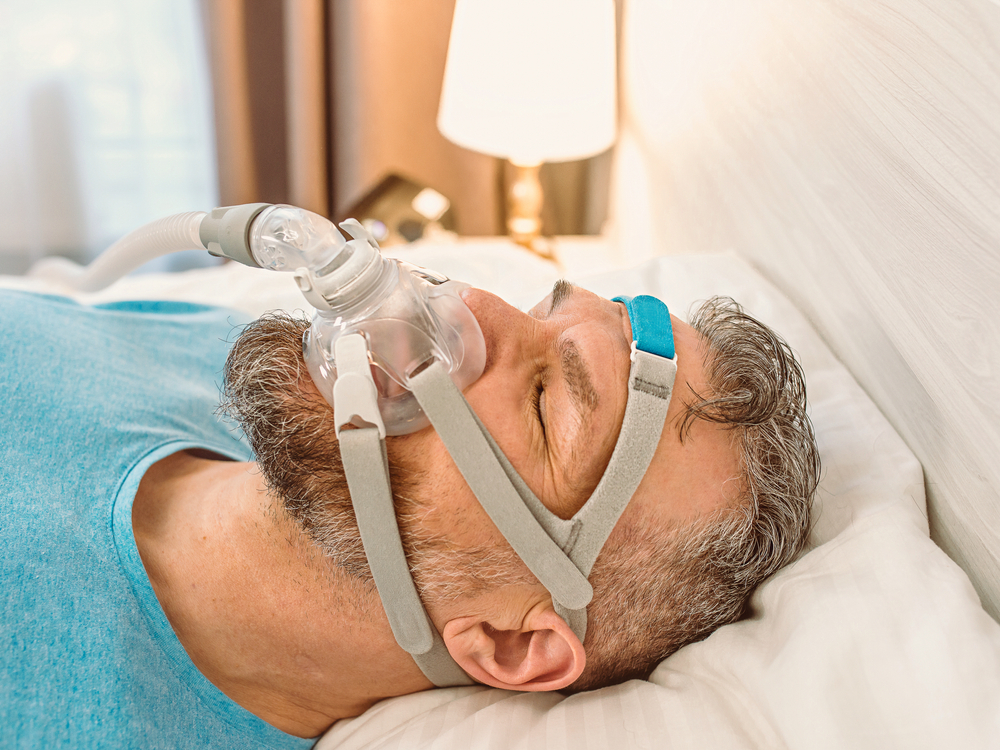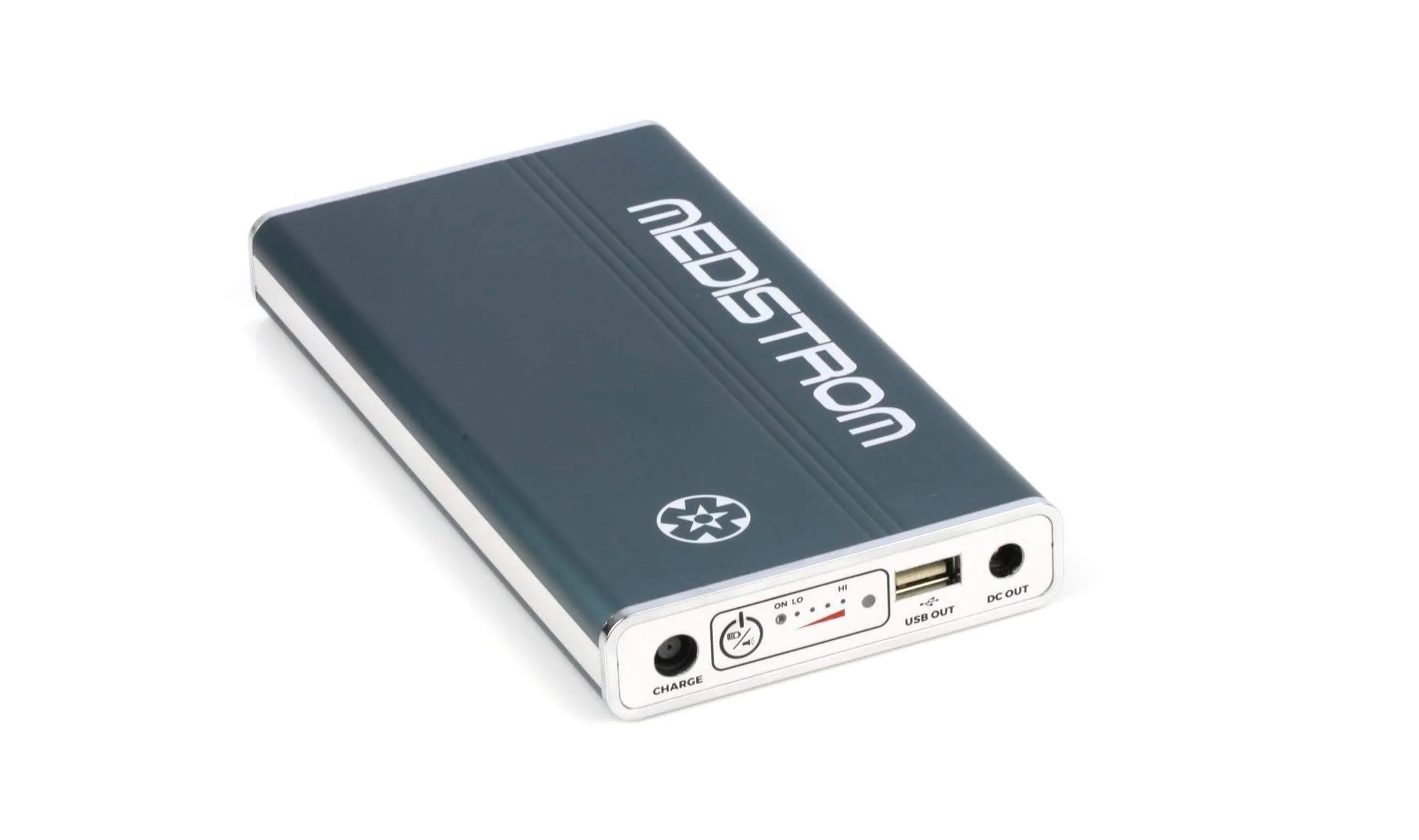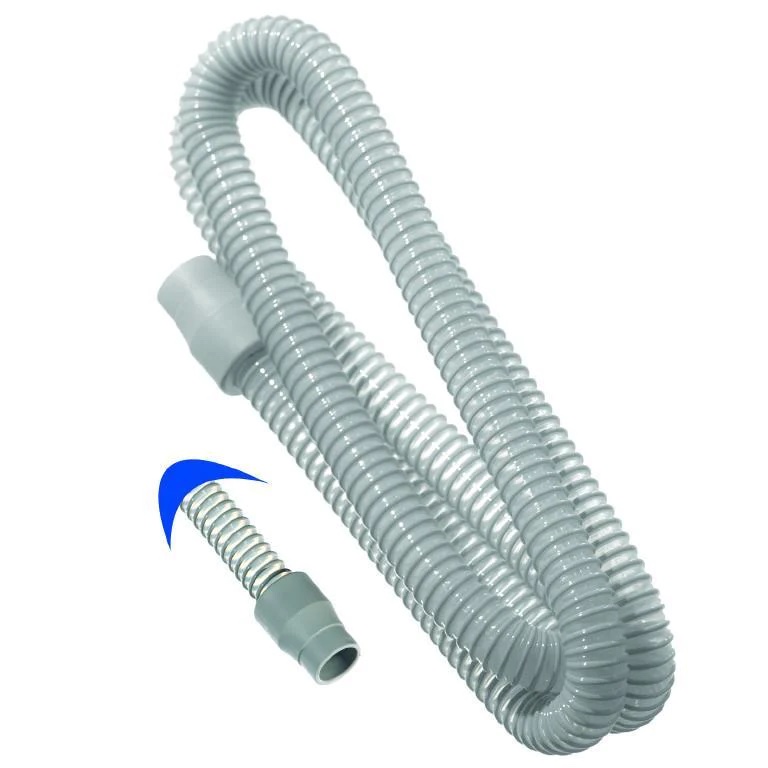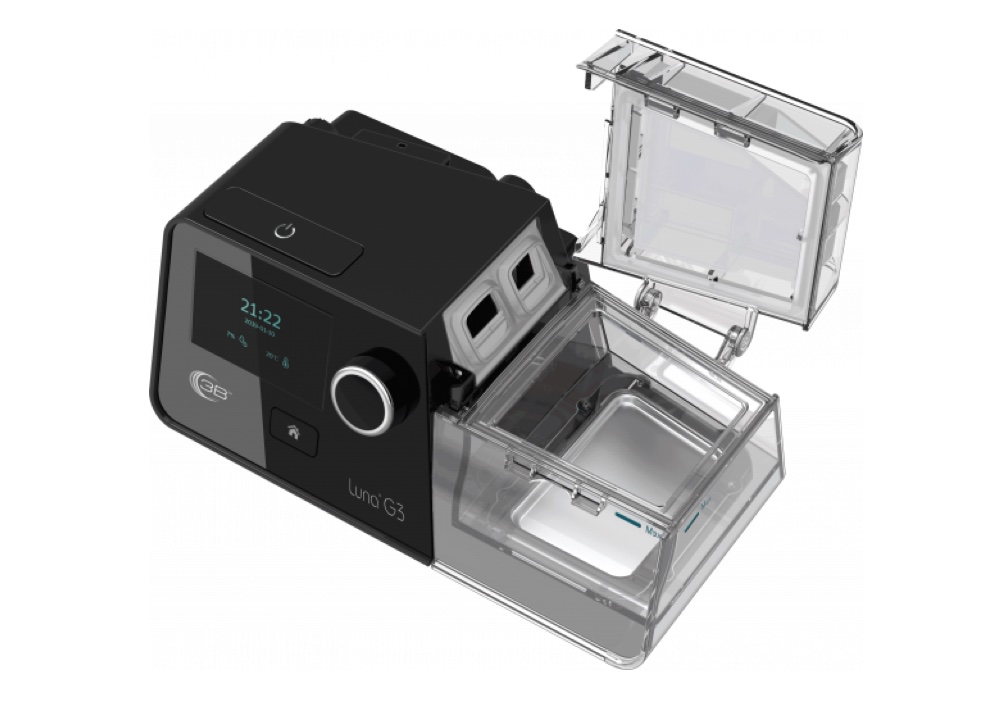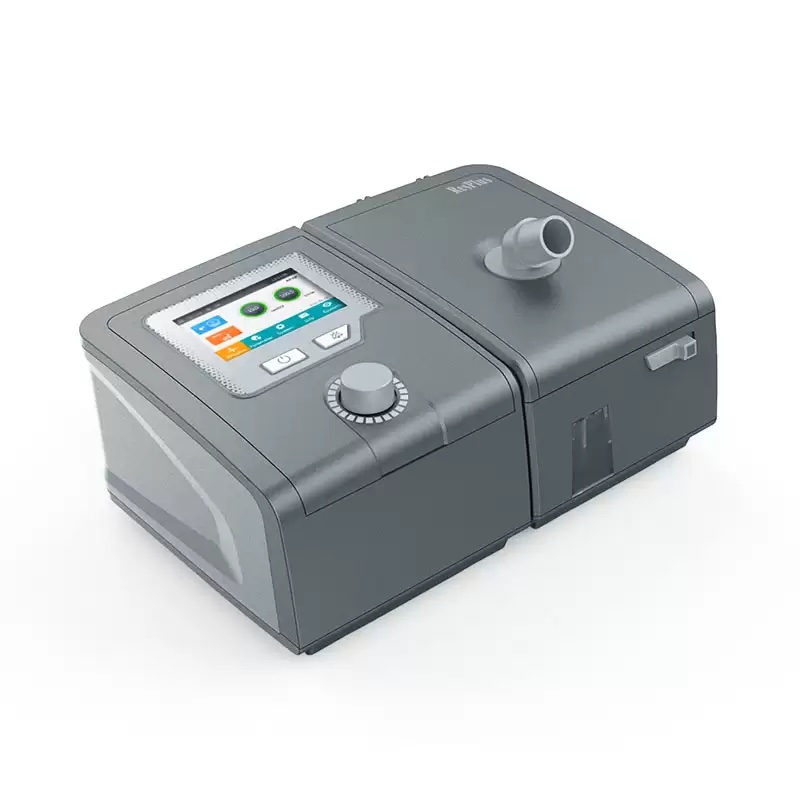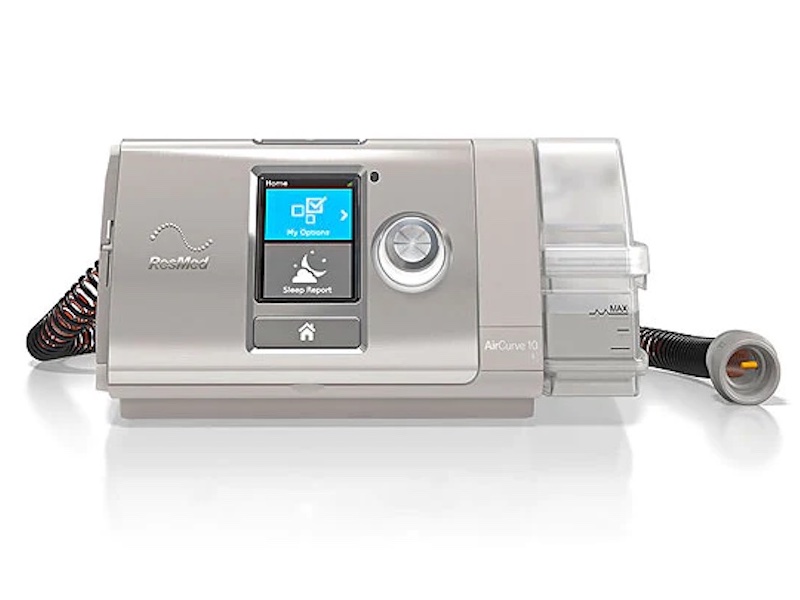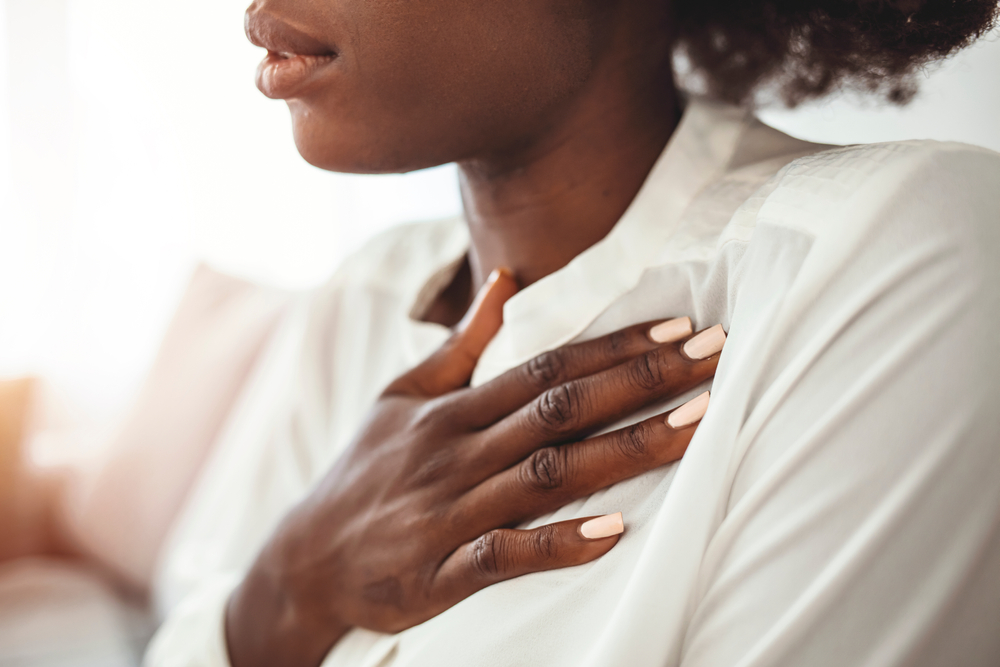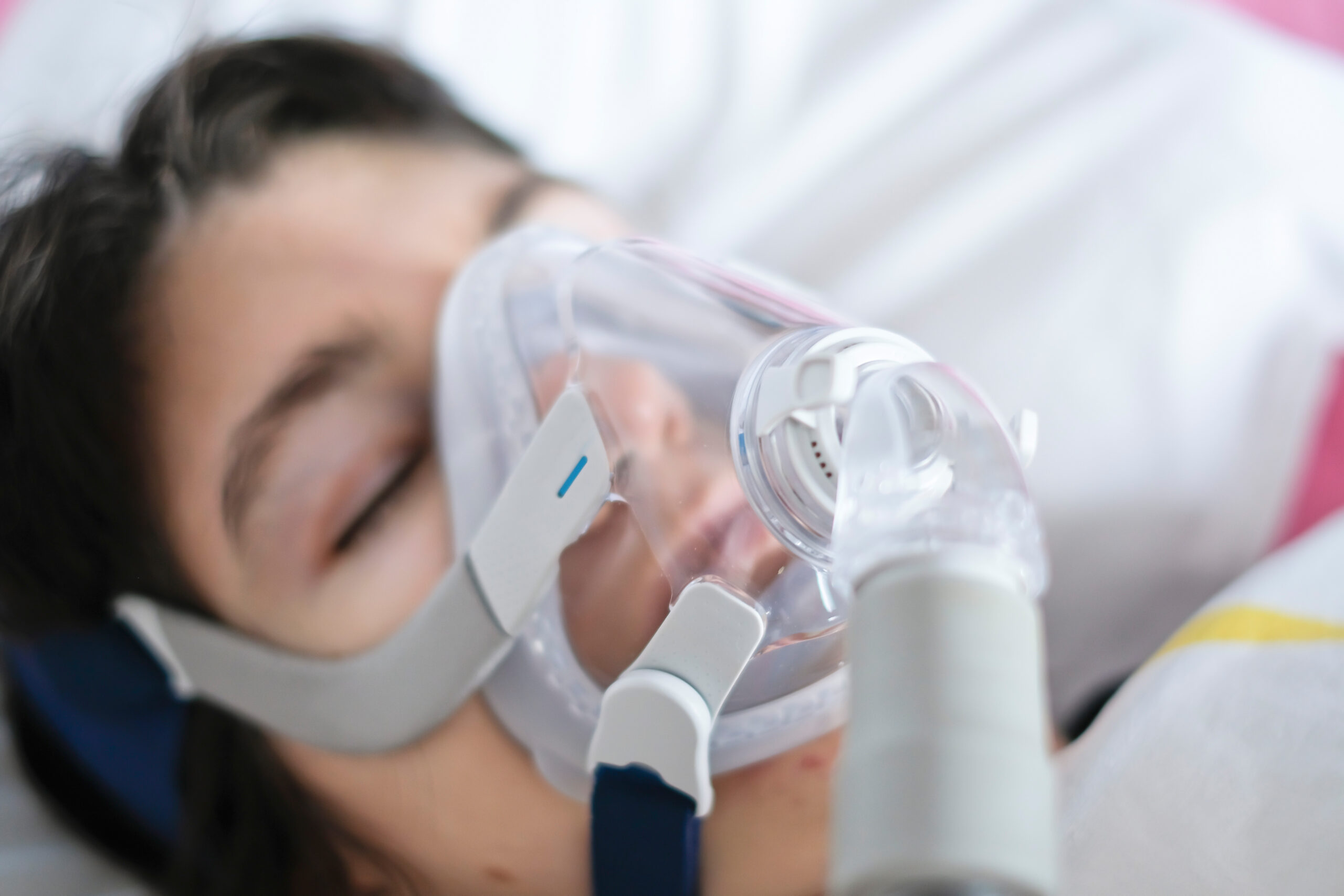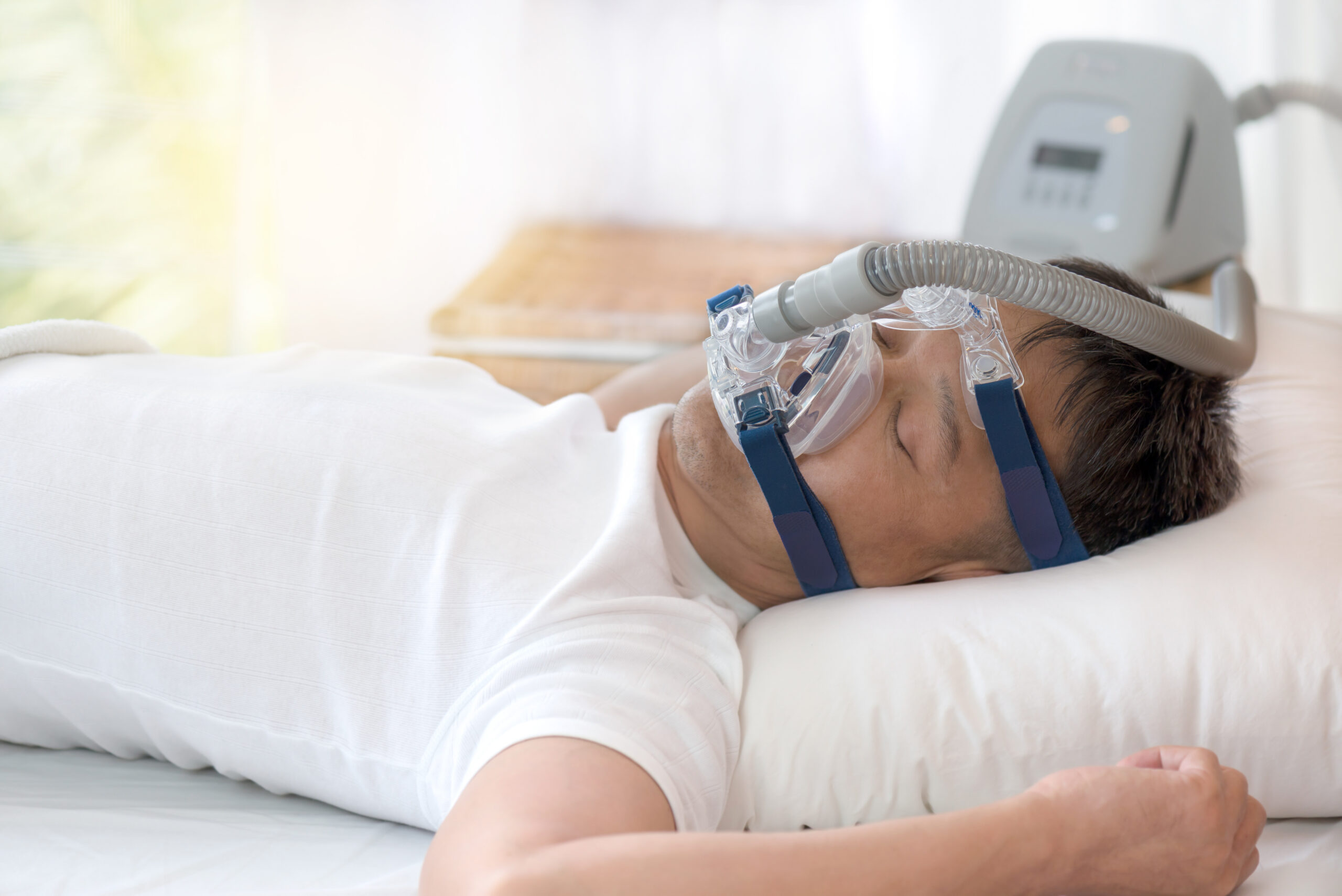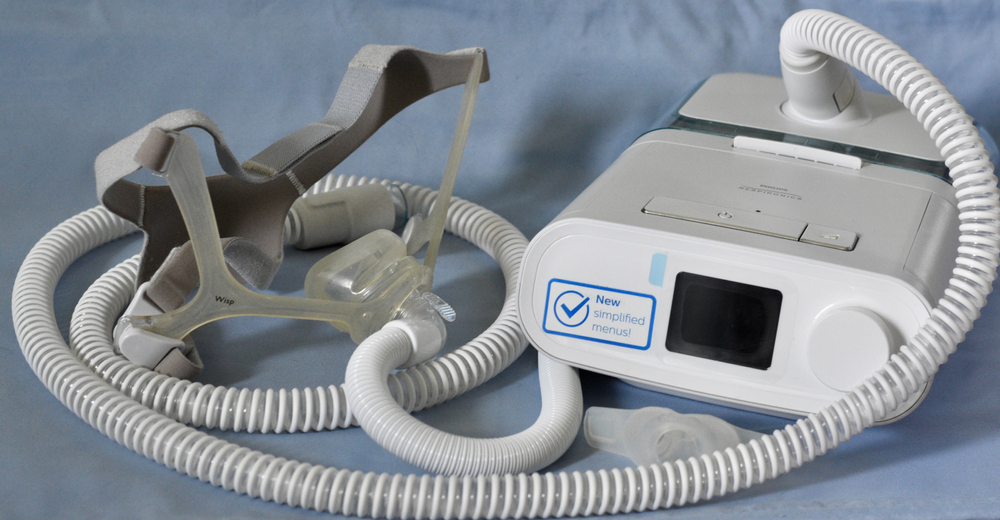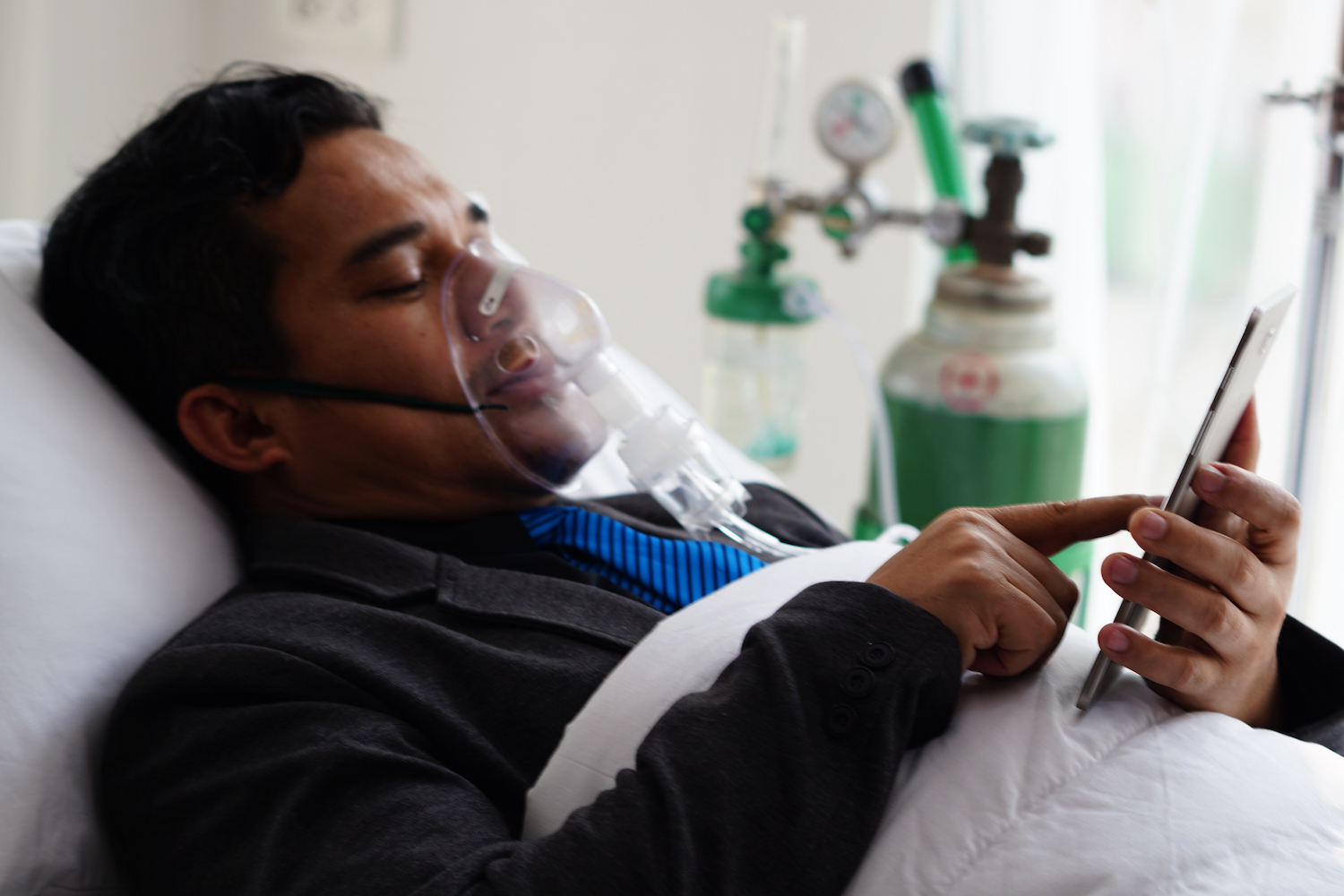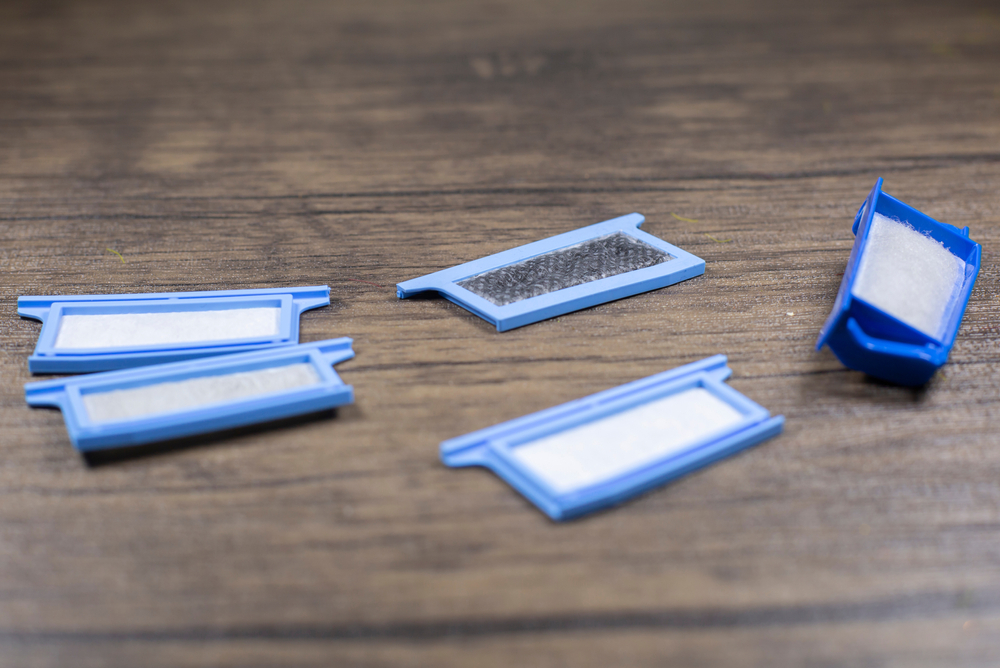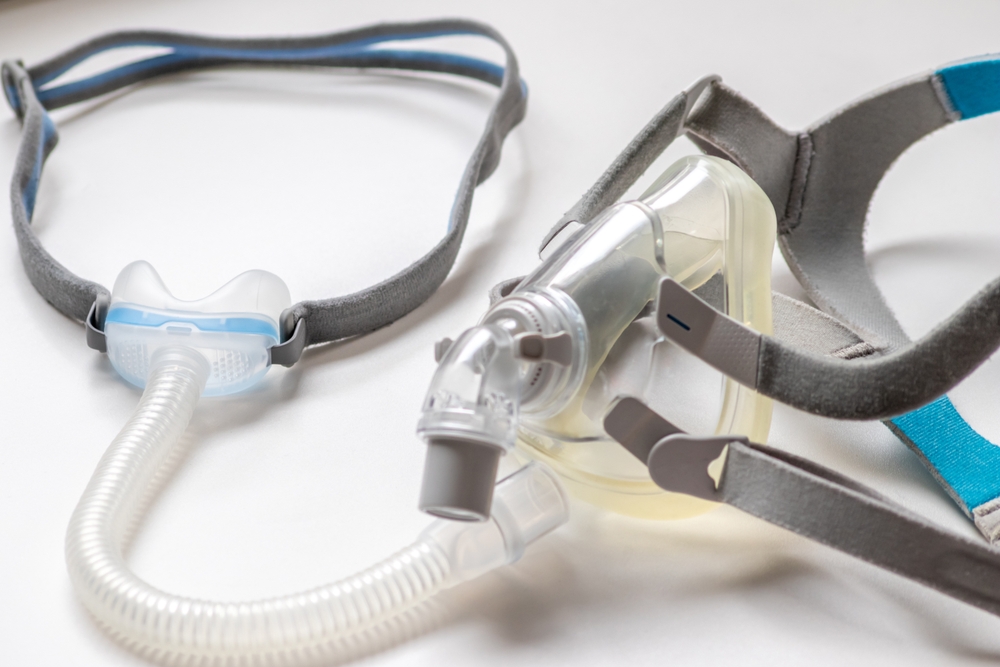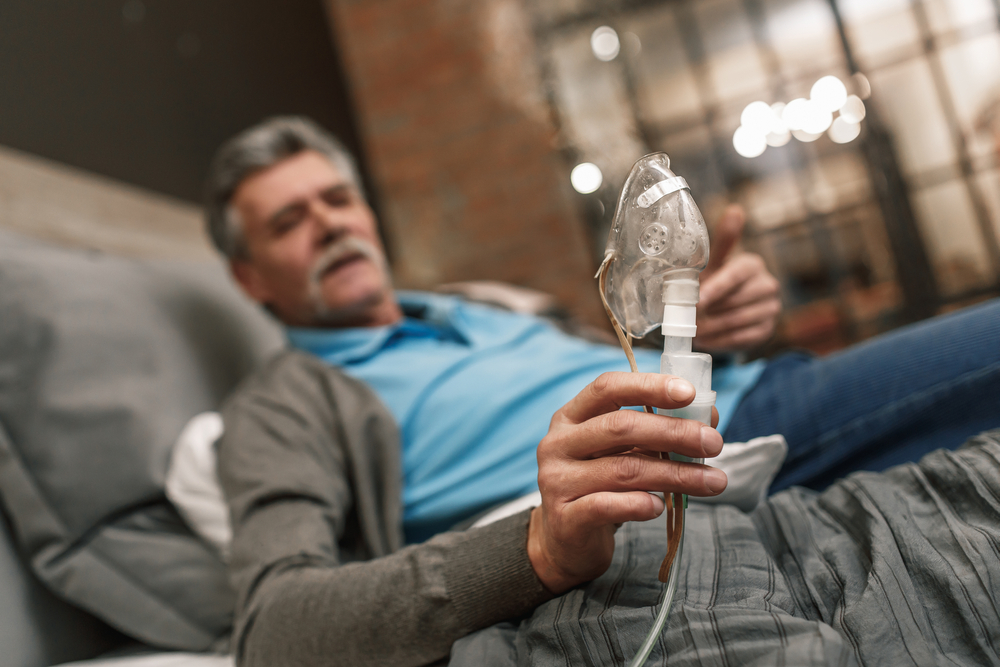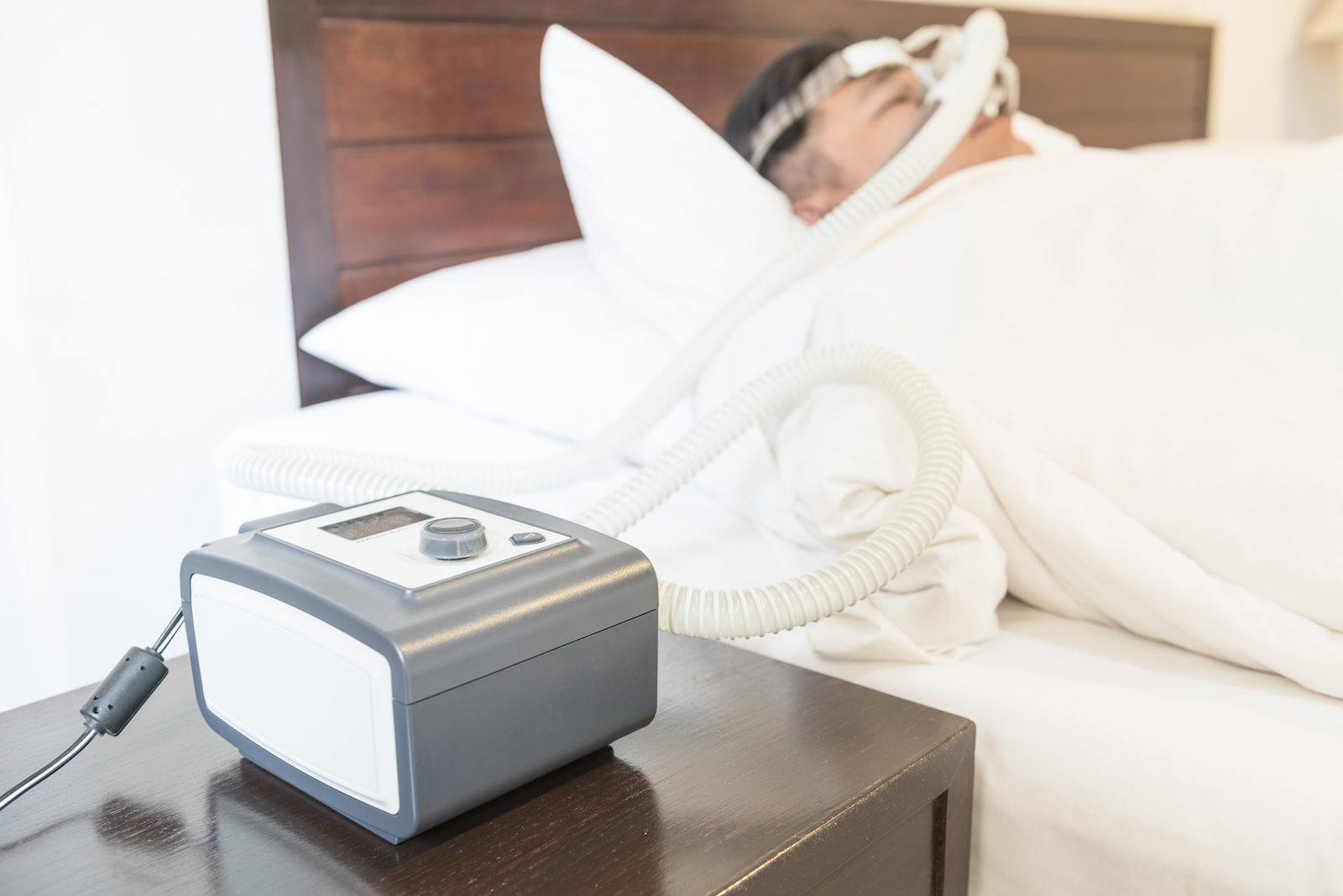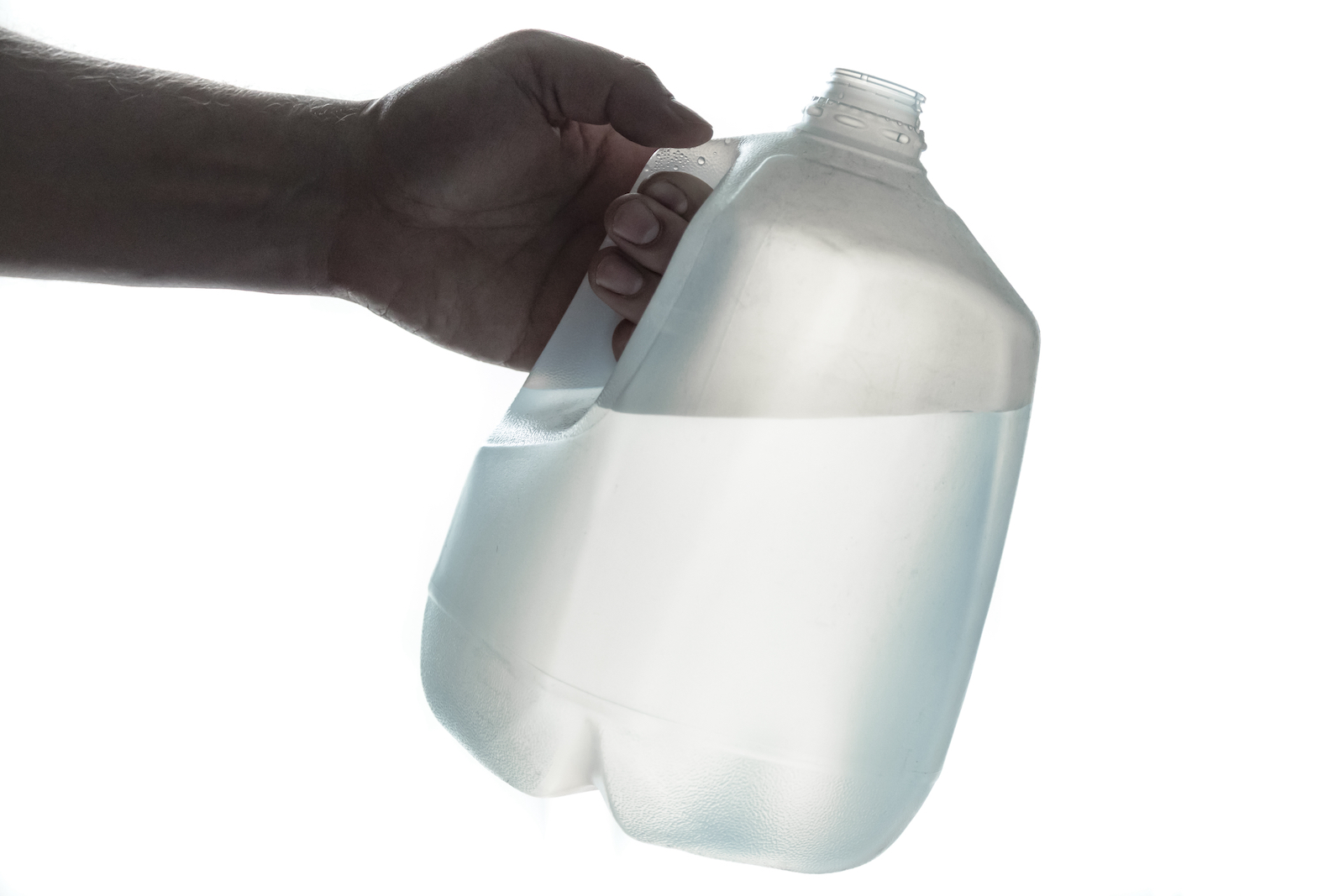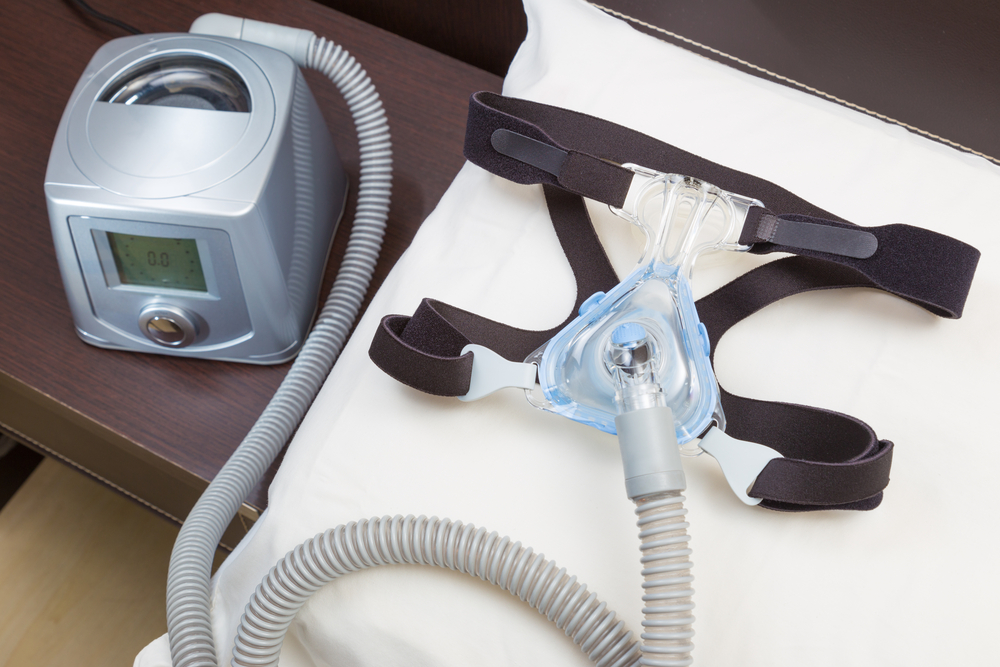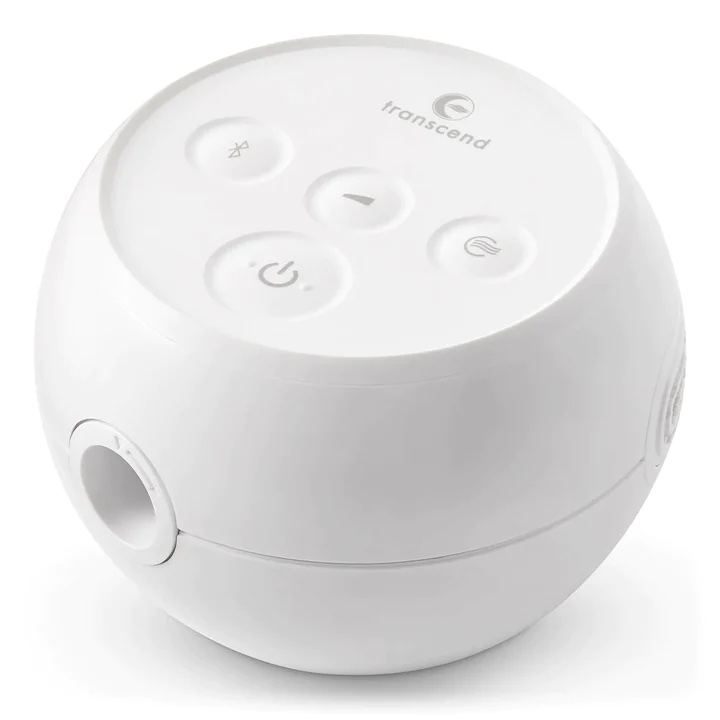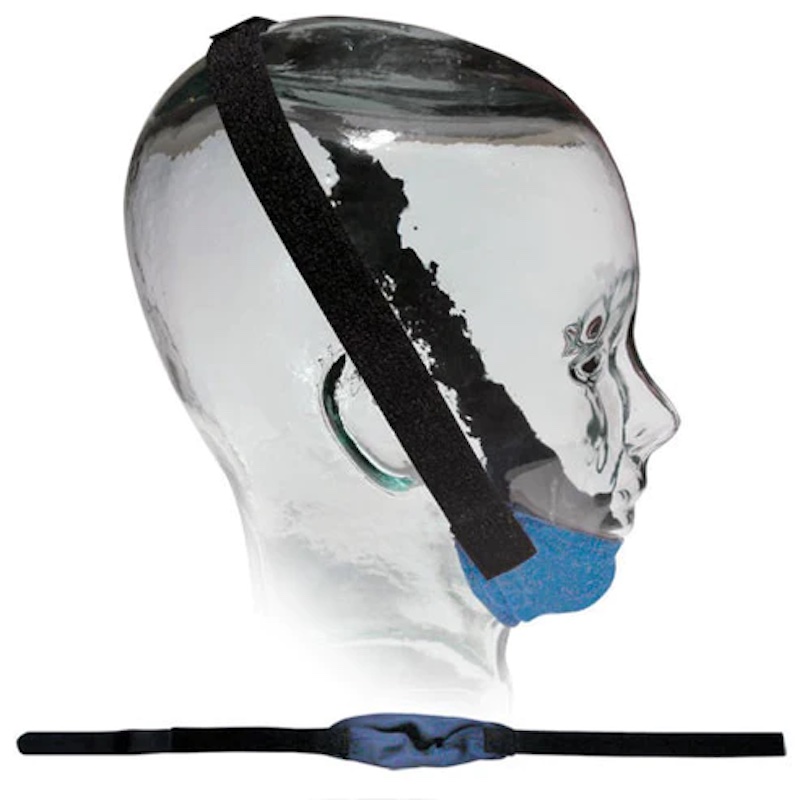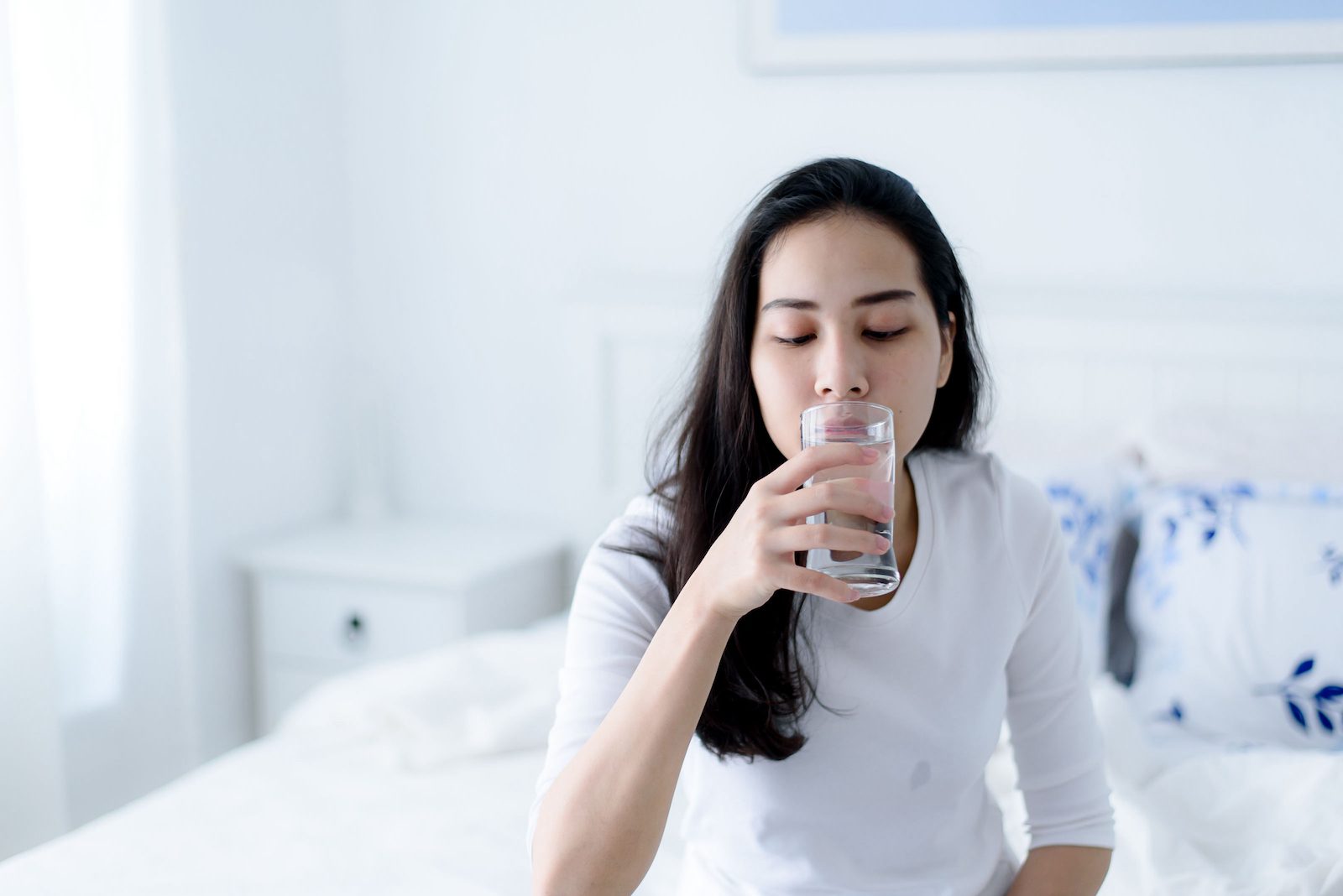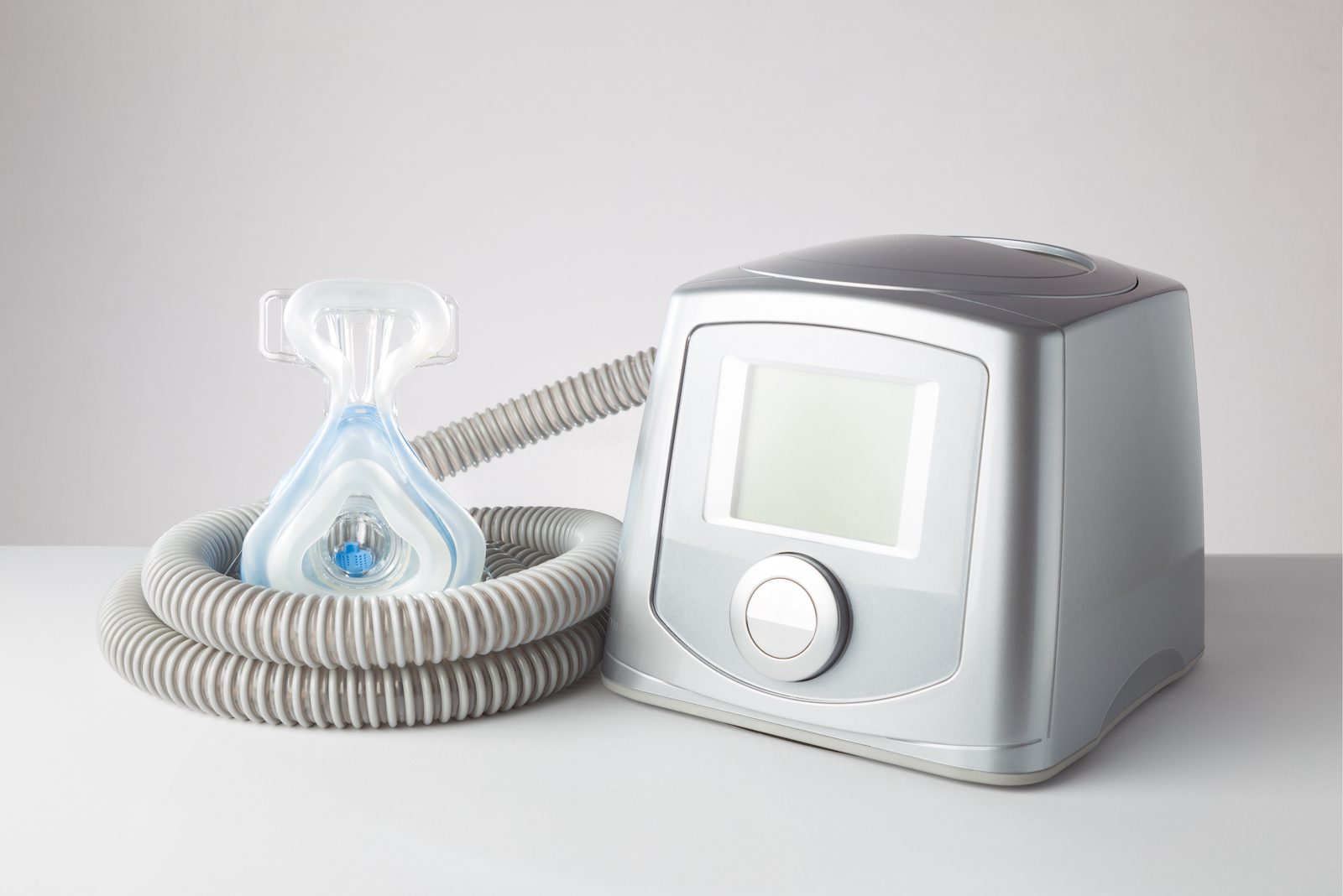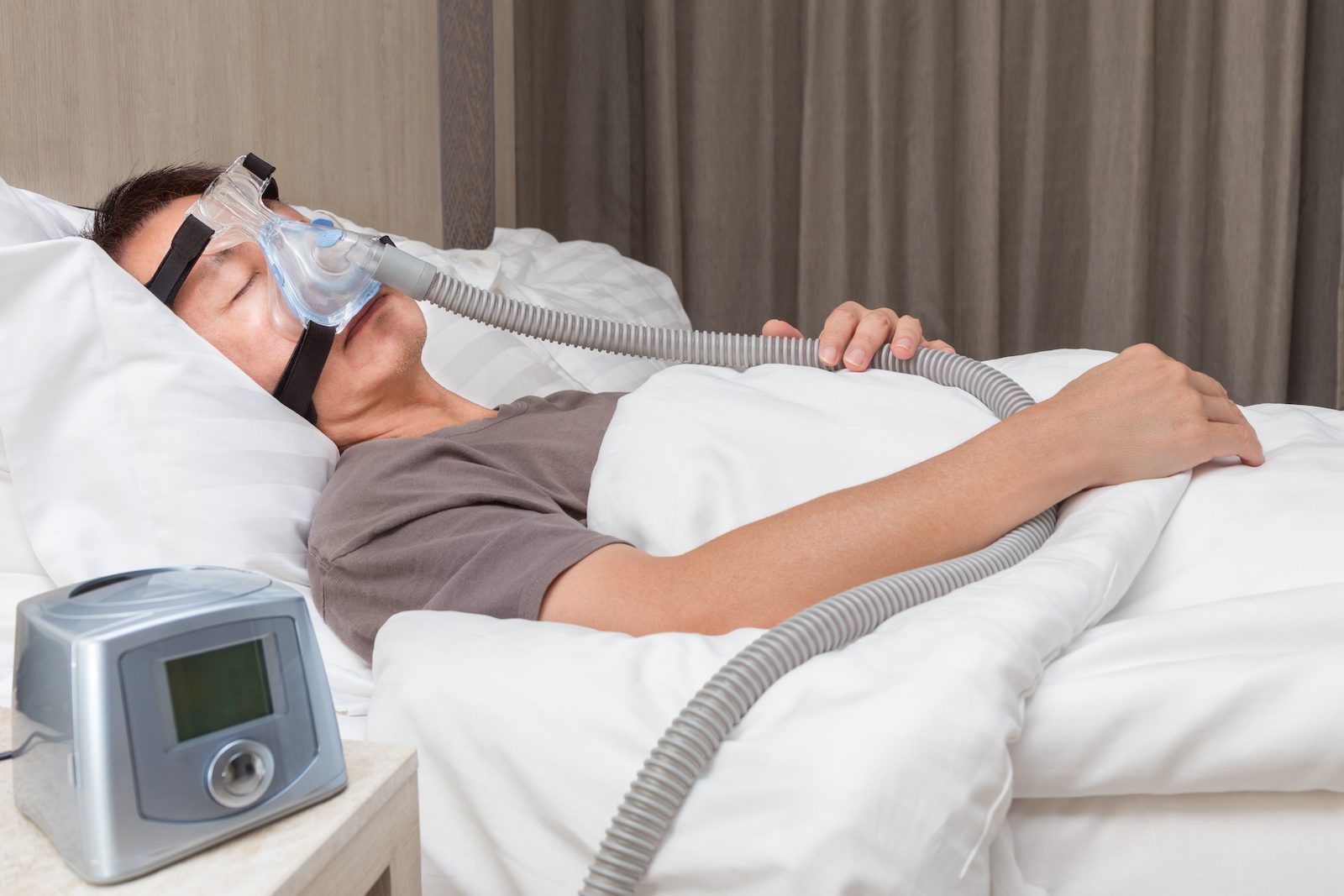Oxygen concentrators and continuous positive airway pressure (CPAP) machines are two medical devices commonly used to manage respiratory issues.
Oxygen concentrators deliver oxygen-enriched air to people who need to increase the amount of oxygen in their bloodstream. CPAP machines deliver pressurized air to help keep the upper airway open during sleep. A prescription from a doctor is required to obtain either device.
We’ll explore the differences between oxygen concentrators and CPAP machines, the conditions they treat, and how they work. We’ll also answer frequently asked questions about each device.
Think You May Have Sleep Apnea? Try an At-Home Test
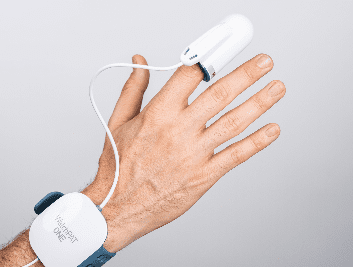
our partner at sleepdoctor.com
Save 45% on your Sleep Test Today
Shop now“Truly grateful for this home sleep test. Fair pricing and improved my sleep!”
Dawn G. – Verified Tester
What Is an Oxygen Concentrator?
An oxygen concentrator is a machine that supplies supplemental oxygen. The concentrator draws in outside air, then absorbs nitrogen from the air to increase the percentage of oxygen. This filtered air is then delivered to the user through either a face mask or a nose tube, called a nasal cannula.
Oxygen concentrators are available in either home or portable models. Home devices are typically bulky and have wheels for easier transport, while portable models are more convenient but tend to be pricier. Portable devices also generally deliver lower levels of pure oxygen.
What Conditions Does an Oxygen Concentrator Treat?
Oxygen concentrators are used to treat a variety of respiratory conditions that can impact blood oxygen levels. A concentrator delivers oxygen-enriched air to increase oxygen saturation and ease respiratory difficulties. Oxygen concentrators can treat and ease symptoms of several conditions, including:
- Chronic obstructive pulmonary disease (COPD)
- Severe asthma
- Pneumonia
- COVID-19
- Cystic fibrosis
How Does an Oxygen Concentrator Work?
An oxygen concentrator takes the air we breathe, which contains approximately 21% oxygen, and removes nitrogen to deliver 85% to 95% pure oxygen to the user through a face mask or nasal cannula.
What Is a CPAP Machine?
A CPAP machine is a medical device that delivers a steady stream of pressurized air through a mask that seals at the nostrils, over the nose, or over the mouth and nose. The pressurized air helps prevent airway collapse during sleep.
What Conditions Does a CPAP Machine Treat?
Following a sleep study, a doctor may prescribe CPAP therapy if they determine that you have a form of sleep apnea. A CPAP machine can provide a variety of benefits related to keeping the airway open to allow normal breathing, such as stabilizing oxygen levels, enhancing overall sleep quality, eliminating snoring, and improving blood pressure.
CPAP and other forms of positive airway pressure (PAP) therapy are commonly prescribed for both obstructive sleep apnea (OSA) and central sleep apnea (CSA). The latter condition is less common and involves pauses in breathing during sleep due to interruptions in the brain’s signals to the muscles that control breathing.
OSA, which involves a narrowing or blockage of the upper airway when the throat muscles relax during sleep, is sometimes treated with automatic positive airway pressure (APAP) therapy or bilevel positive airway pressure (BiPAP) therapy.
An APAP machine automatically adjusts air pressure based on the user’s breathing patterns, while BiPAP machines deliver differing air pressure levels during inhalation and exhalation. While APAP is not recommended for people with CSA, BiBAP therapy is a common treatment option.
How Does a CPAP Machine Work?
A CPAP machine delivers pressurized air through a hose that’s attached to a CPAP mask. The steady stream of pressurized air is intended to keep the upper airway open during sleep.
What Is the Difference Between a CPAP Machine and an Oxygen Concentrator?
While CPAP machines and oxygen concentrators both provide targeted airflow, they differ in design, function, and pricing. A CPAP machine uses pressurized air to help keep the airway open during sleep, while an oxygen concentrator provides oxygen-enriched air for people with low blood oxygen levels. CPAP machines are typically more compact, weigh less, and cost less on average.
Consult your doctor to determine the best treatment options for your specific needs.
Oxygen Concentrators vs. CPAP Machines
| Oxygen Concentrator | CPAP Machine |
|---|---|
|
|
Does Health Insurance, Medicaid, or Medicare Cover the Cost of These Devices?
Medicare and Medicaid cover oxygen therapy equipment, including oxygen concentrators, under certain conditions. These include a doctor’s prescription and documentation from the prescribing doctor that other treatment options were tried and were unsuccessful.
A CPAP machine is considered an eligible expense by Medicare and Medicaid if the person being prescribed the device meets certain requirements, including therapy adherence during a three-month trial period and documentation from a doctor that the therapy is helping.
While many private insurers cover these devices, you’ll need to check with your insurance provider about your specific health plan coverage.
Can You Use an FSA or HSA Account to Buy Either Device?
CPAP machines and oxygen concentrators are considered medical equipment, making them eligible for purchase with a flexible spending account (FSA) or health savings account (HSA) under IRS guidelines. You can also purchase face masks and other accessories for these devices with your FSA or HSA funds.
Oxygen Concentrators and CPAP Machines
CPAP machines do not use supplemental oxygen, nor do they absorb nitrogen and produce oxygen-enriched air the way an oxygen concentrator does. Instead, a CPAP machine draws in air from the room and then filters and pressurizes it based on the user’s prescribed pressure setting.
Oxygen concentrators and CPAP machines serve different functions. An oxygen concentrator is used to treat respiratory conditions that cause low oxygen levels in the blood. A CPAP machine is used to keep the airway open during sleep and prevent the breathing interruptions that occur as a result of sleep apnea.
While sleep apnea causes oxygen desaturation during pauses in breathing, oxygen therapy alone is not recommended as a first-line treatment for sleep apnea. Studies have shown that while oxygen therapy may reduce the number of apneic events in some people with sleep apnea, it may also increase the duration of halted or shallow breathing episodes.
In some instances, a doctor may prescribe the simultaneous use of both an oxygen concentrator and a CPAP machine. This may be necessary for an individual who has sleep apnea and another condition that causes low blood oxygen levels, such as COPD.
To connect an oxygen concentrator to a CPAP machine, you may need an adapter called an oxygen enrichment port connector, also known as a bleed-in connector. The adapter connects directly to the CPAP machine. It has a larger port to connect the CPAP hose and a smaller port for the oxygen tube. The other end of the CPAP hose attaches to your mask to deliver the combined airflow.
The process may differ slightly for heated CPAP tubing. While some heated hoses have a built-in oxygen port designed to connect with an oxygen tube, others may require that the bleed-in connector attach higher up the tubing at the mask junction.
Still have questions?
Sleep apnea products can be confusing. If you need individualized assistance, post your question to the Sleep Doctor forum.






